August 29th Friday - Go To Top Of Page - Next Day
One more day of the land tour to Eze, Monaco & Monte Carlo.
Did You Know? - We departed for the Eze, Monaco & Monte Carlo Tour. This morning we headed to the hilltop town of Eze, renowned for its stunning views of the Mediterranean Sea, for a scenic walking tour along its charming 9:00 AM -5:00 PM cobblestone streets that will take you back the historic times.
Later that day, we explored Monaco town to see the Princes Palace, located on the Monaco Rock, The Prince's Palace has been the official seat of the Grimaldi family for over 700 years.
It was here that the famous Hollywood actress, Grace Kelly, lived after her marriage to Prince Rainier III.
Afterwards we visit the luxury and beauty of Monte Carlo, famous for its opulent casino, shopping and its glamorous hotels and world-famous Formula One Grand Prix
This morning head to the hilltop town of Eze, renowned for its stunning views of the Mediterranean Sea, for a scenic walking tour along its charming cobblestone streets that will take you back the historic times.
Later, explore Monaco town to see the Princes Palace, located on the Monaco Rock, The Prince's Palace has been the official seat of the Grimaldi family for over 700 years.
It was here that the famous Hollywood actress, Grace Kelly, lived after her marriage to Prince Rainier III.
Afterwards we visit the luxury and beauty of Monte Carlo, famous for its opulent casino, shopping and its glamorous hotels and world-famous Formula One Grand Prix

Historic city hall and clock tower in Aix-en-Provence, France. Aix-en-Provence, France
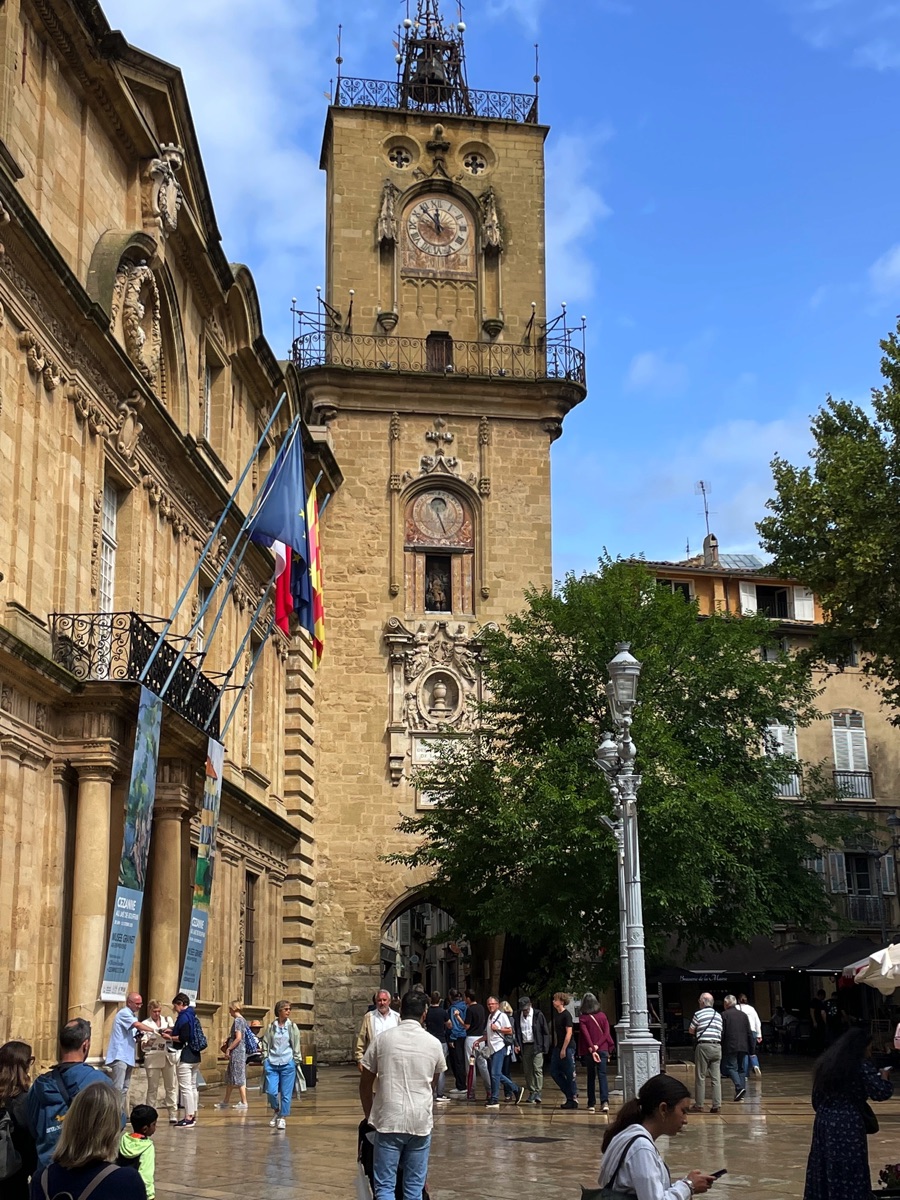
Did You Know? - The Hôtel de Ville (Town Hall) and its adjacent Clock Tower (Tour de l'Horloge) in Aix-en-Provence are historic monuments on Place de l'Hôtel de Ville. The tower, a 1510 Renaissance structure built on a Roman-era Roman military outpost site, features a 1661 astronomical clock with four manually moved wooden statues representing the seasons. The Town Hall itself is a classical 17th-century building housing portraits of counts and kings.
Key Features & History Tour de l'Horloge (Clock Tower): Origin: Originally the gate of the Roman military outpost of Sextius, the tower was built in 1510.
Style: A Renaissance tower with distinctive Gothic elements like pinnacles and ogees.
Astronomical Clock: An astronomical clock from 1661 features four wooden statues representing the four seasons, which are rotated manually to mark the changing seasons.
Foundation: The tower has a white limestone foundation that is part of the original Roman military checkpoint.

Did You Know? - Charlie Lounge Bar, nestled in the charming heart of Monaco-Ville, offers a dining experience that remains somewhat elusive to the broader dining community. Located on Rruga UQK-ja te qafa, this establishment has yet to make a significant appearance in popular restaurant directories. As such, little is known about its offerings or ambiance.
An online presence for Charlie Lounge Bar is sparse, with only a minimal profile on Facebook and the absence of user reviews leaves many questions unanswered.


Did You Know? - Aix-en-Provence is the "City of a Thousand Fountains," the birthplace of painter Paul Cézanne, and the historic cultural capital of Provence, France. It features Roman ruins, a famous market, and one of France's oldest universities, Aix-Marseille University.

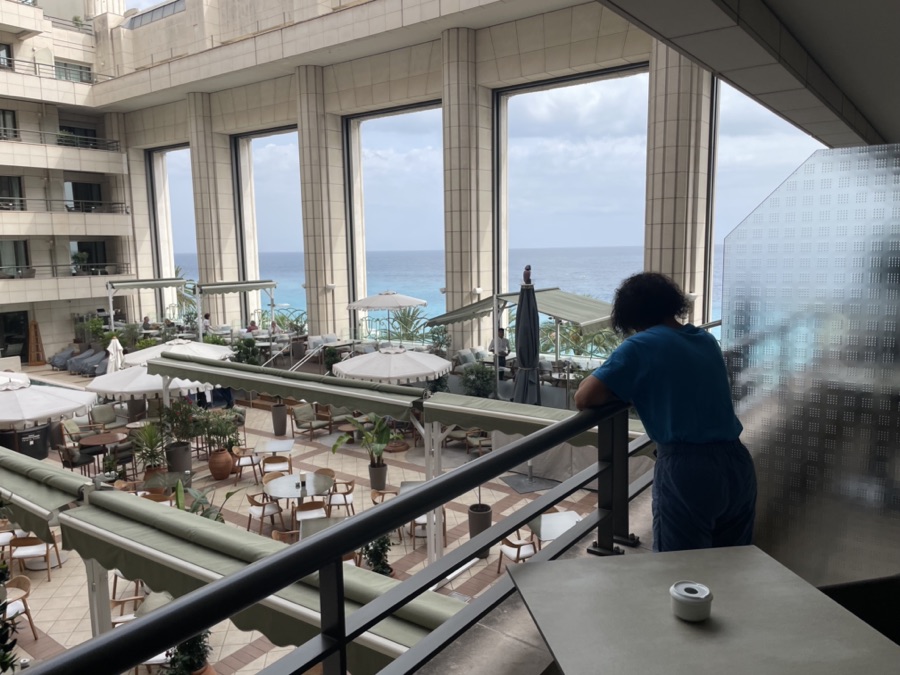
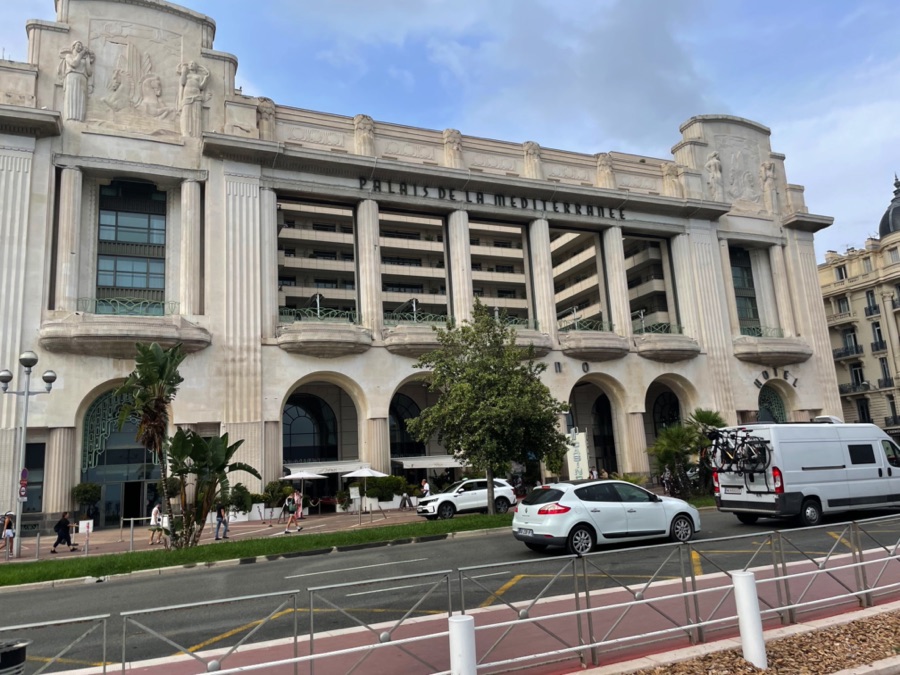
Did You Know? - The Palais de la Méditerranée is a historic Art Deco hotel and casino in Nice, France, with a turbulent past and a glamorous revival. It is famously known for its striking white façade, its association with Jazz Age celebrities, and for being the site of a scandalous, unsolved disappearance in the 1970s.
Interesting facts and history
American millionaire's vision: Built in 1929, the original Palais was commissioned by Frank Jay Gould, an American millionaire who wanted to create a playground for the international elite.
A jewel of Art Deco: Designed by architects Charles and Marcel Dalmas, the building is a stunning example of Art Deco style, characterized by its dramatic colonnaded façade.
Jazz Age playground: In its heyday, the Palais de la Méditerranée was a premier destination for celebrities and high society. The casino, theater, and cocktail bars drew famous performers like Maurice Chevalier, Josephine Baker, and Yves Montand.
The Le Roux disappearance: The original hotel closed in 1978 after a high-profile scandal involving the disappearance of Agnès Le Roux, the daughter of the casino's owner. Her family's lawyer was eventually convicted of her murder decades later, though her body was never found.
Partial demolition and reconstruction: In 1990, after falling into disrepair, most of the original building was demolished. However, its historically-classified Art Deco façade was meticulously preserved, giving the building its unique "old-meets-new" character today.
Rebirth as a modern luxury hotel: Following the reconstruction, the property was purchased and redeveloped by the Taittinger family (of the Champagne house) before becoming the Hyatt Regency Nice Palais de la Méditerranée in 2004.
Noteworthy location: The hotel is located on the iconic Promenade des Anglais, right on the waterfront, placing it in a prime location near the beach and Old Nice.

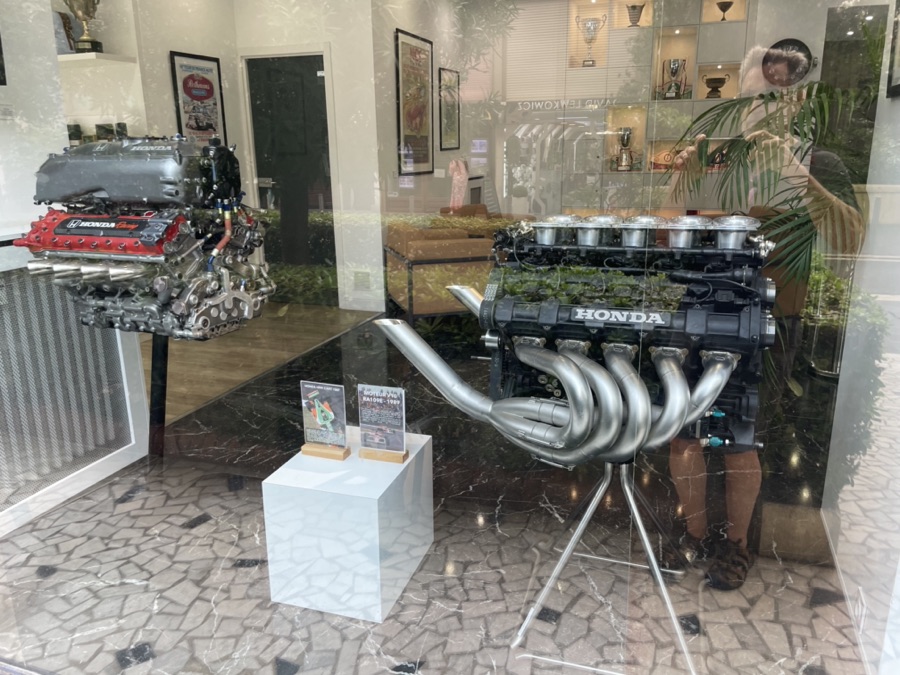
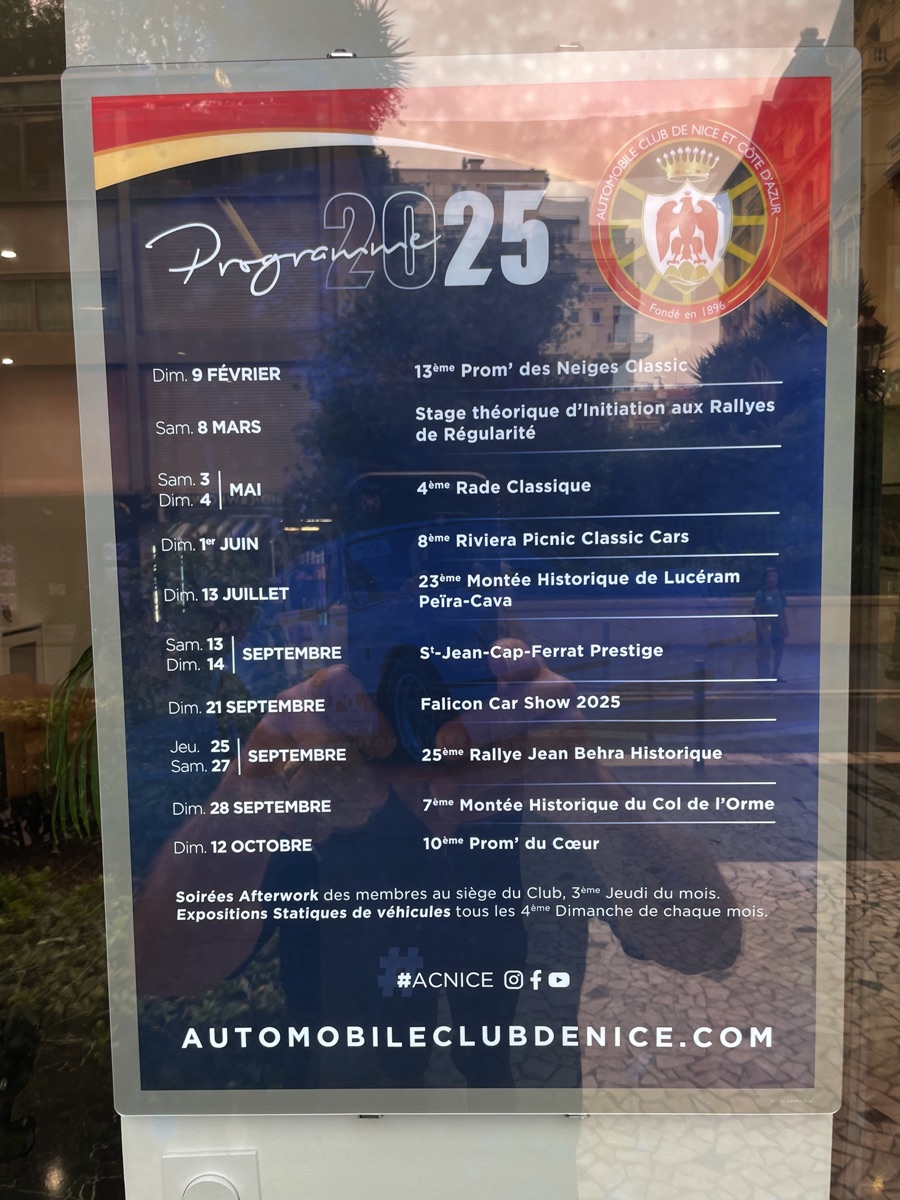
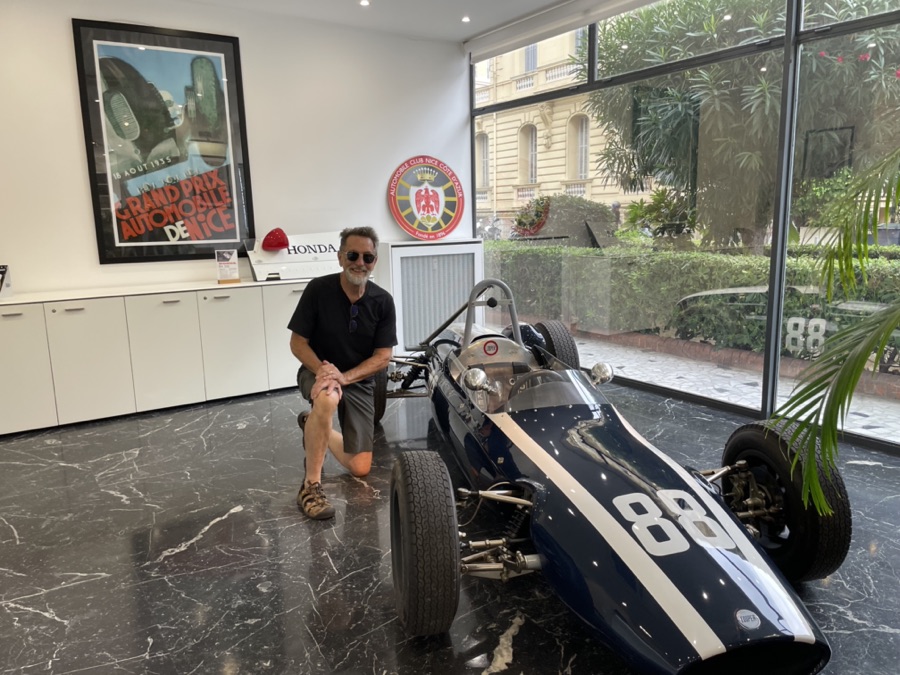
Bob's new hot rod!

August 30th Saturday - Go To Top Of Page - Next Day
Nice City tour: Nicknamed "Nice la Belle," meaning Nice the Beautiful, this city at the heart of the 9:30 - 12:00 Noon French Riviera truly deserves its name with its abundance of art, culture and life at every corner.
Tour the scenic and elegant capital of the French Riviera, where tourism has been alive for centuries. This tour will be partly by bus and partly on foot. Please be in the lobby area 15 minutes before scheduled regular & gentle tour departure.
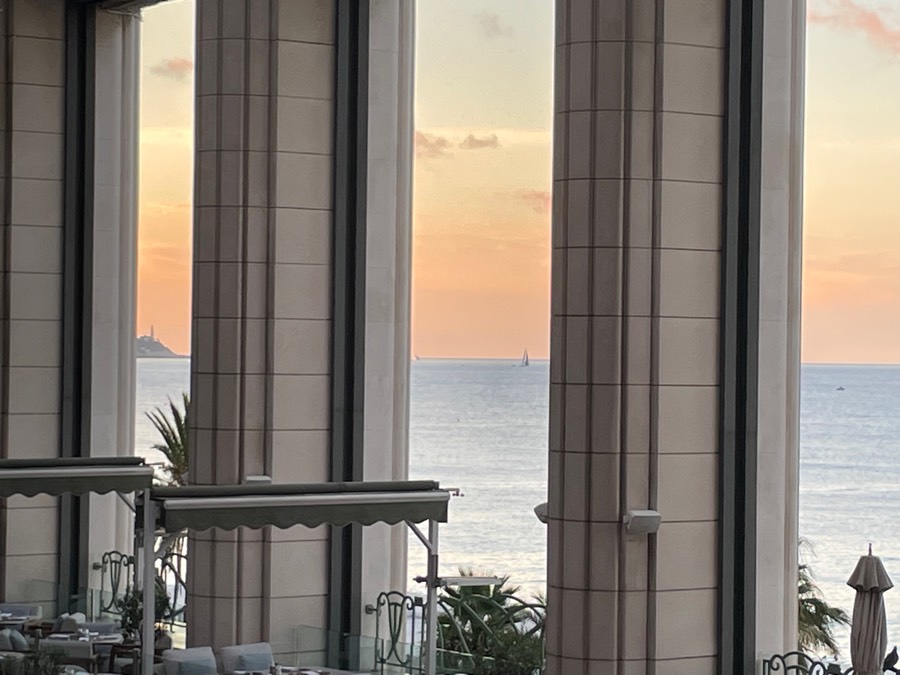

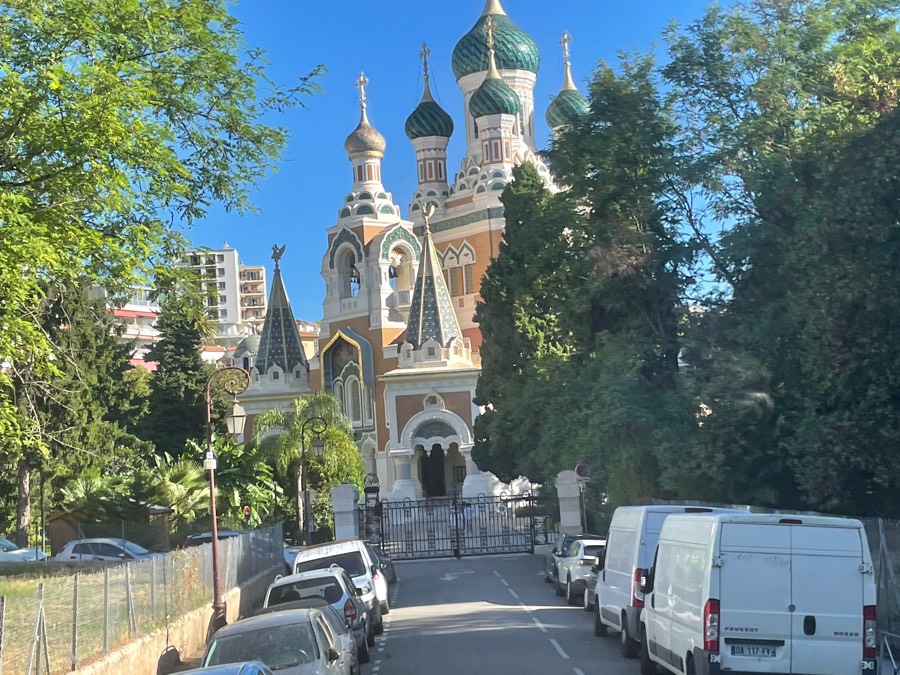
It is the second largest Eastern Orthodox cathedral in Western Europe after Helsinki's Uspenski Cathedral. The cathedral was opened in 1912.
Did You Know? - Beginning in the mid-19th century, Russian nobility visited Nice and the French Riviera, following the fashion established decades earlier by the English upper class and nobility.
In 1864, immediately after the railway reached Nice, Tsar Alexander II visited by train and was attracted by the pleasant climate. Thus began an association between Russians and the French Riviera that continues to this day.
The cathedral, consecrated in December 1912 in memory of Nicholas Alexandrovich, Tsarevich of Russia, who died in Nice, was meant to serve the large Russian community that had settled in Nice by the end of the 19th century, as well as devout visitors from the imperial court.
Tsar Nicholas II funded the construction work. After 1917, Communist persecution of religion in Russia led some Russian Orthodox dioceses abroad to form jurisdictions not affiliated with Moscow.
One of these, the Paris-based exarchate, later assumed control of the Nice Cathedral. On 20 January 2010, a French court (the Tribunal of First Instance at Nice) ruled that the title to the cathedral should be held by the Russian state.
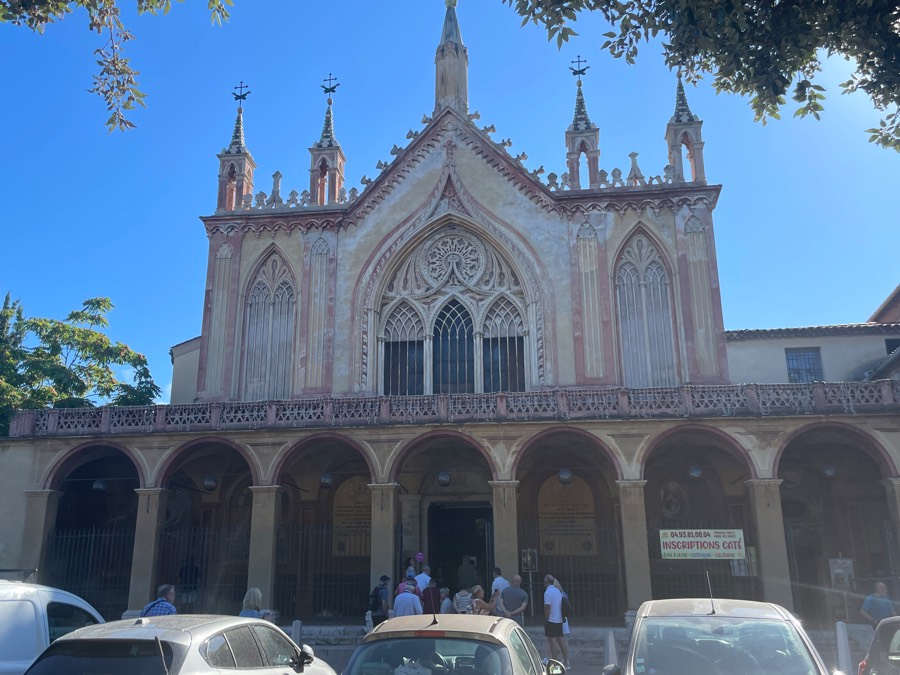

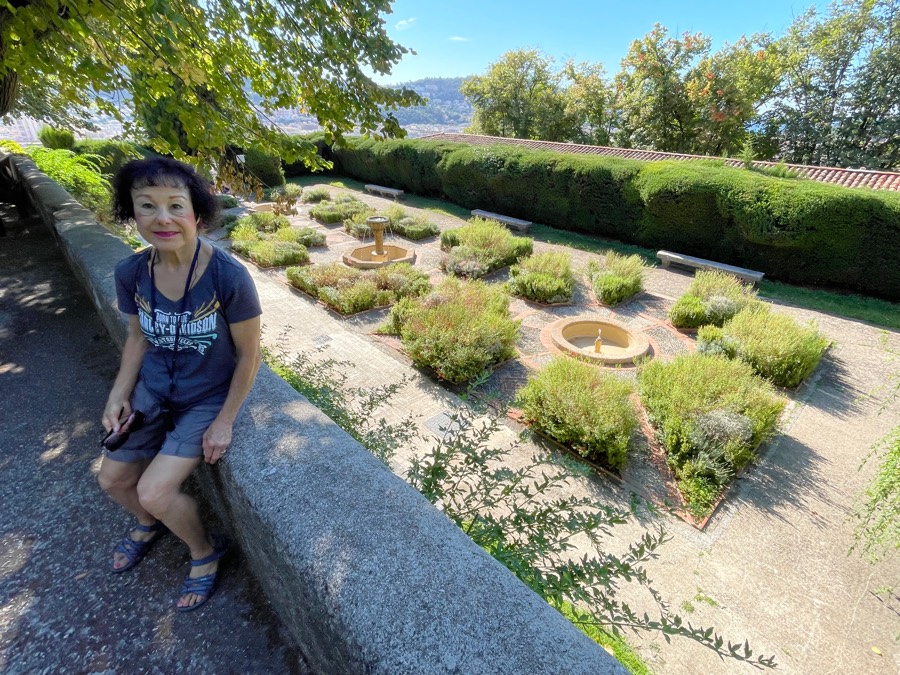

From the Monastery we drove to the old town.
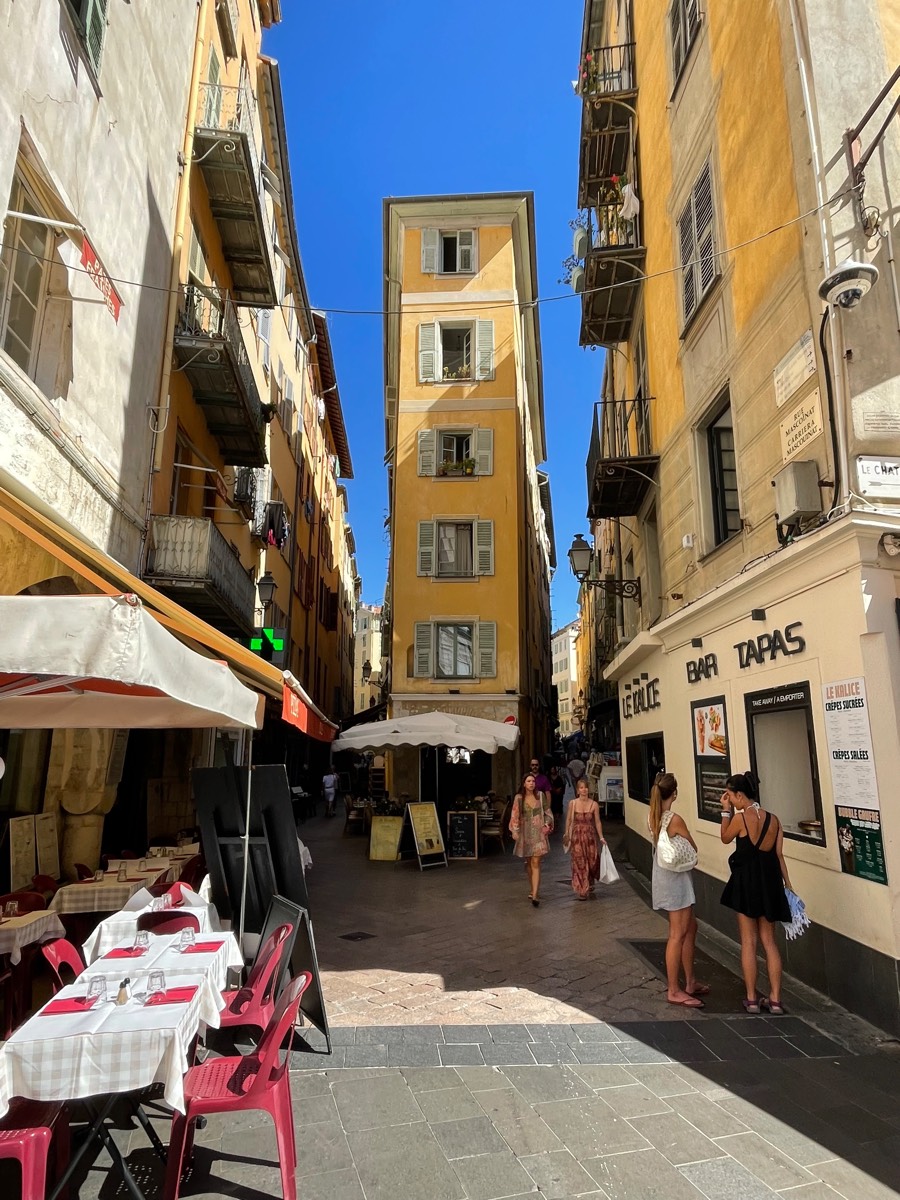
The narrow townhouse in old town, Rue Mascoinat, Nice, France. The vintage narrow house, surrounded with small cafes and outdoor dinings, located on Rue Mascoinat on February 21 in Nice.

Baroque Saint Reparata Cathedral Cathedrale Sainte Reparate in Vieille Ville old town of Nice in France.
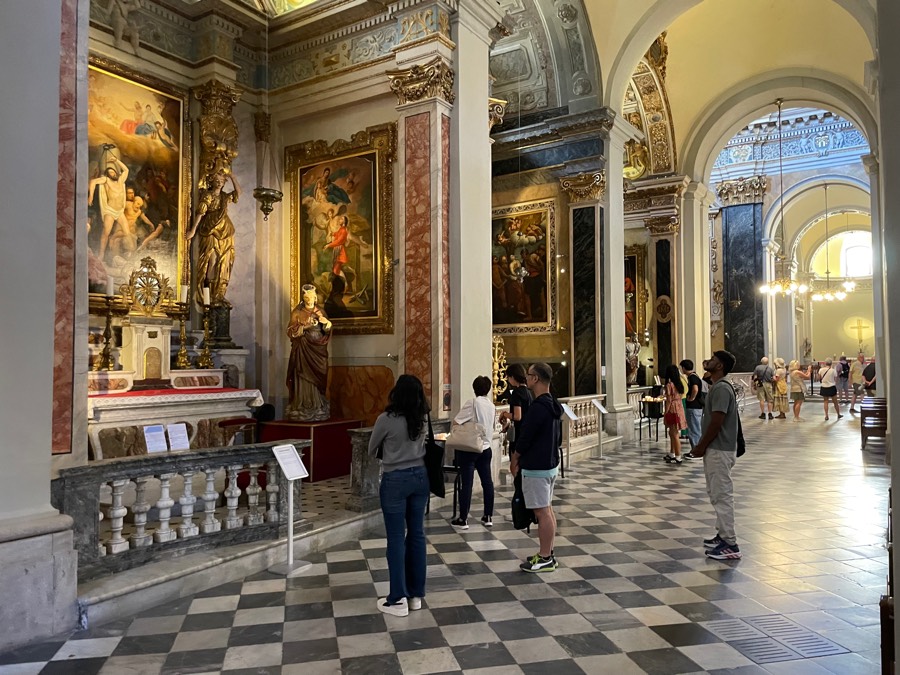
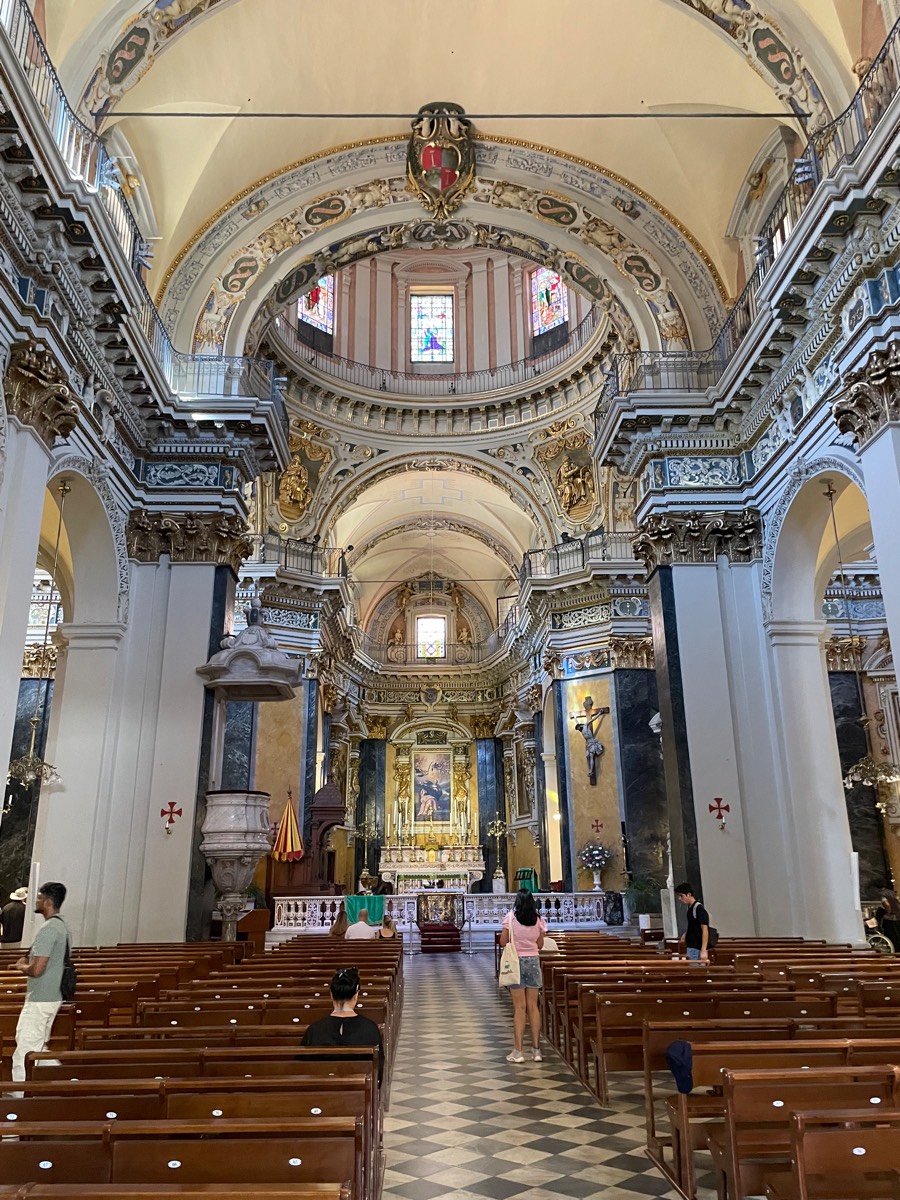
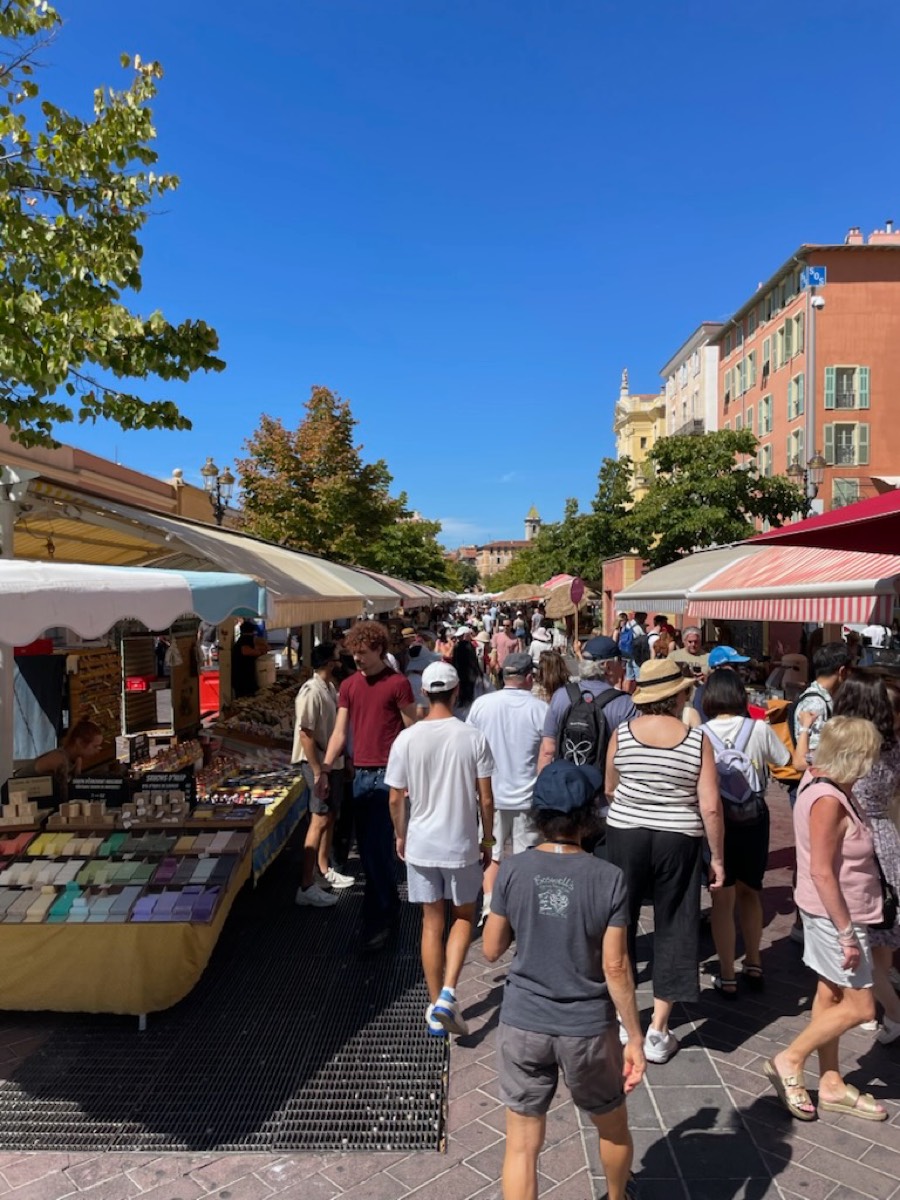
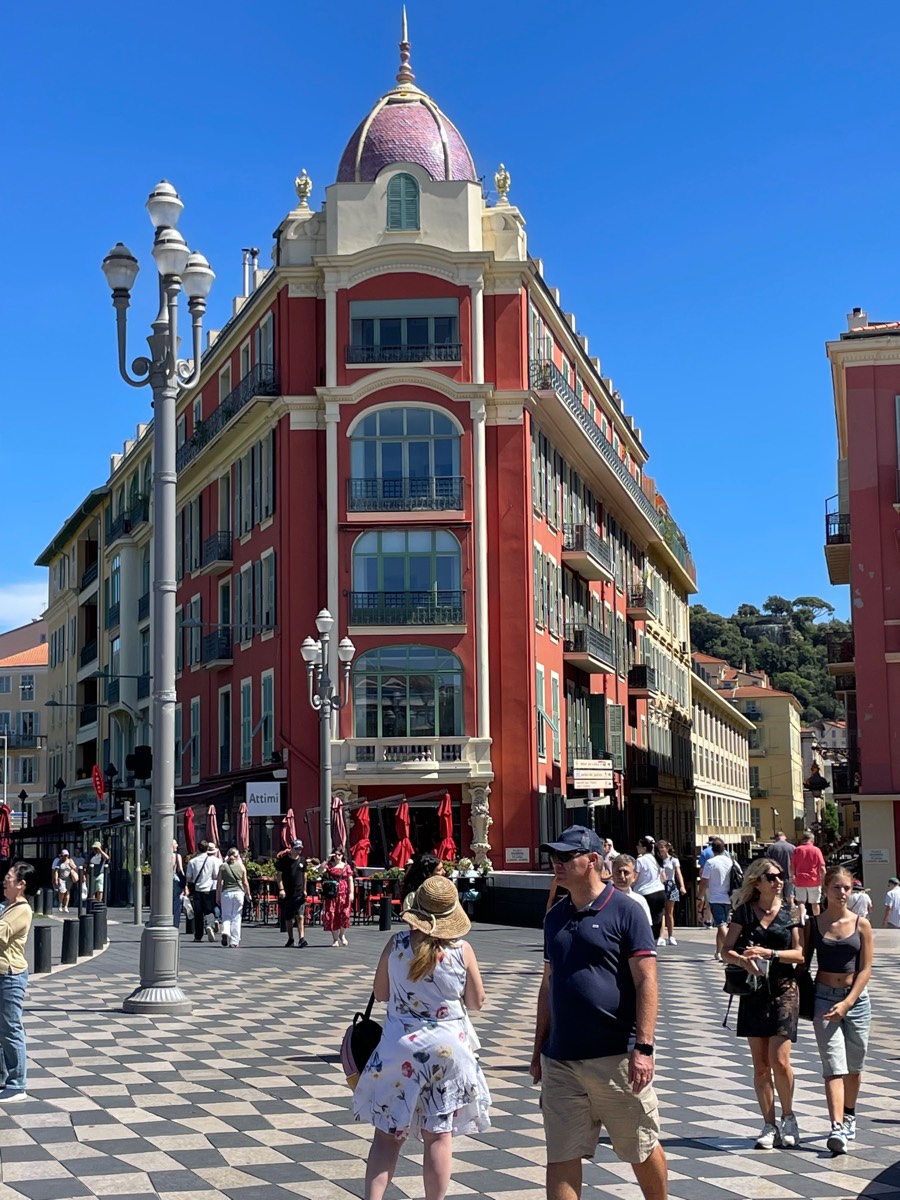
Elegant red flat building on Massena Place, Nice, French Riviera, France
Donna wanted me to get a picture of the fountain. I thought it was because it looked like me when we met. I have never seen her eyes 👀 role back so far….

Fontaine du Soleil (Fountain of the Sun), Place Massena, Nice, Cote d'Azur, Provence, French Riviera, France, Europe
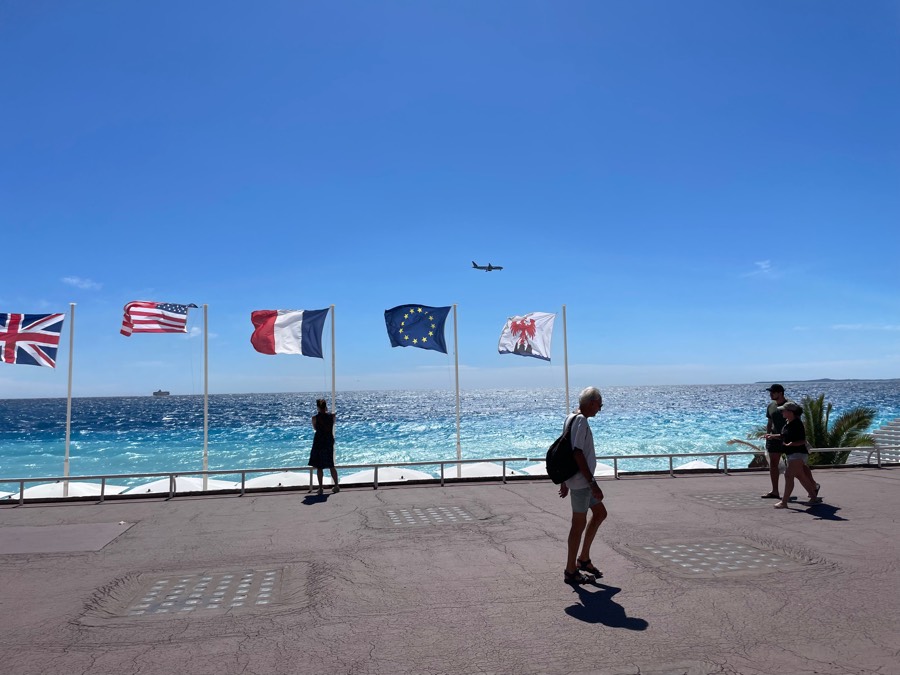

The hotel at night!
August 31st Sunday - Go To Top Of Page - Next Day

Did You Know? - Did You Know? - We departed for the Eze, Monaco & Monte Carlo Tour. This morning we headed to the hilltop town of Eze, renowned for its stunning views of the Mediterranean Sea, for a scenic walking tour along its charming cobblestone streets that will take you back the historic times.
Later that day, we explored Monaco town to see the Princes Palace, located on the Monaco Rock, The Prince's Palace has been the official seat of the Grimaldi family for over 700 years.
It was here that the famous Hollywood actress, Grace Kelly, lived after her marriage to Prince Rainier III.
Afterwards we visit the luxury and beauty of Monte Carlo, famous for its opulent casino, shopping and its glamorous hotels and world-famous Formula One Grand Prix
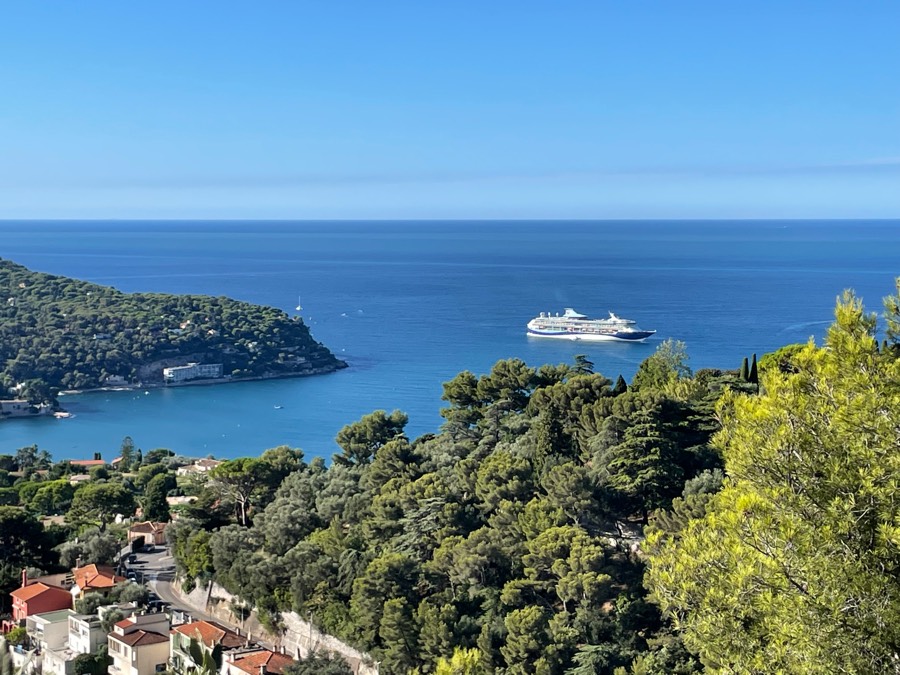

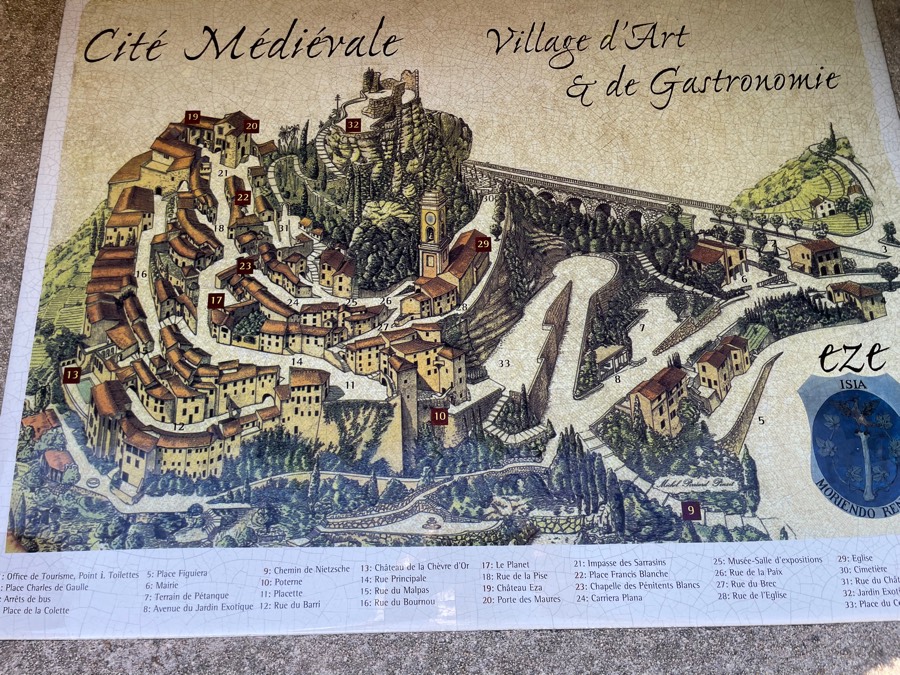
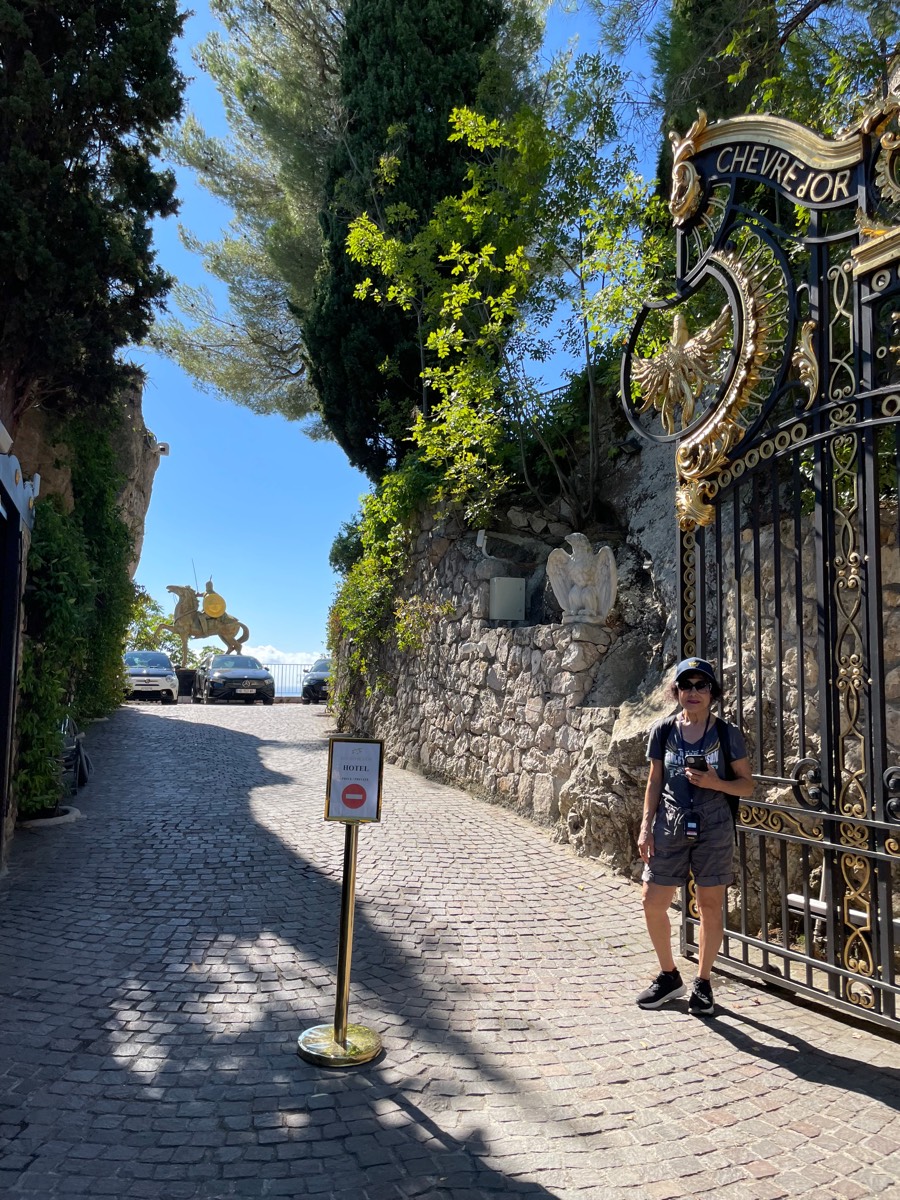
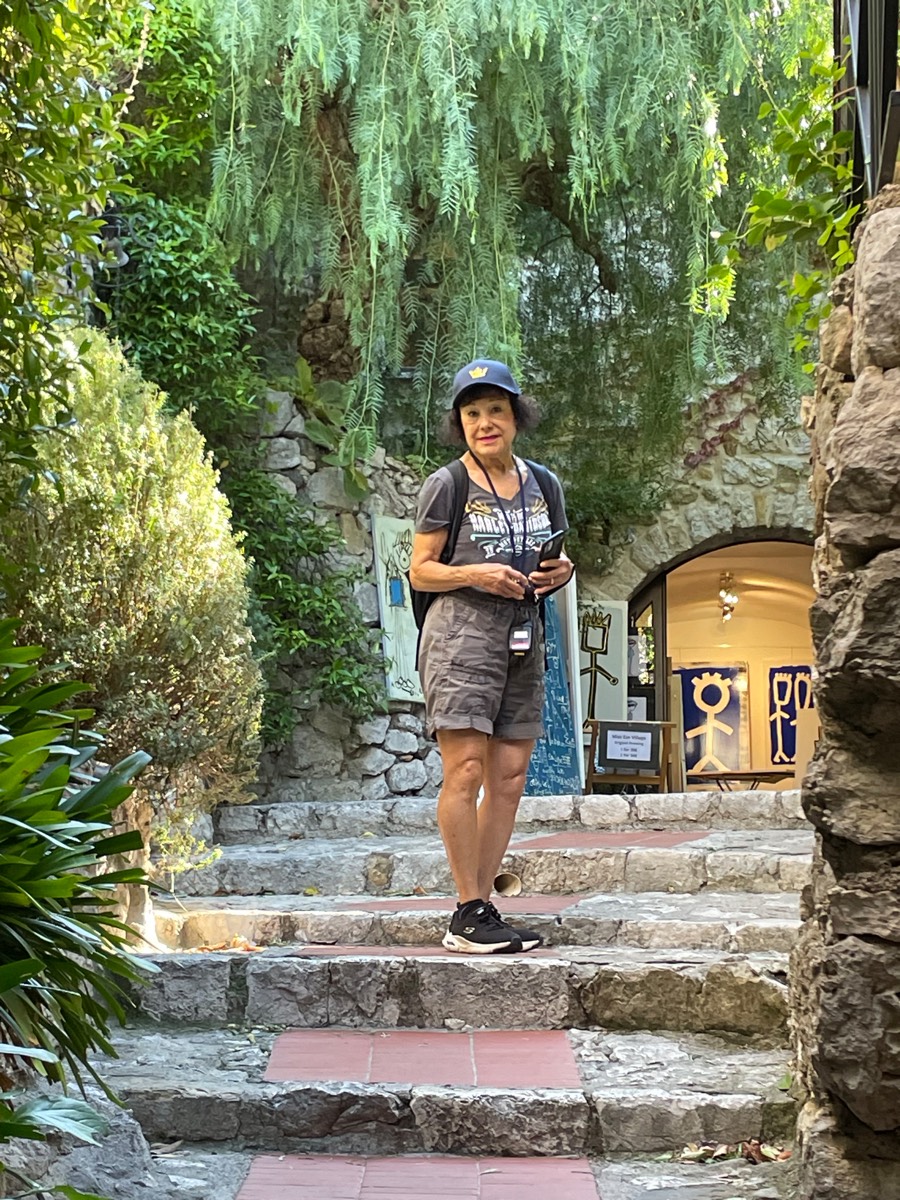
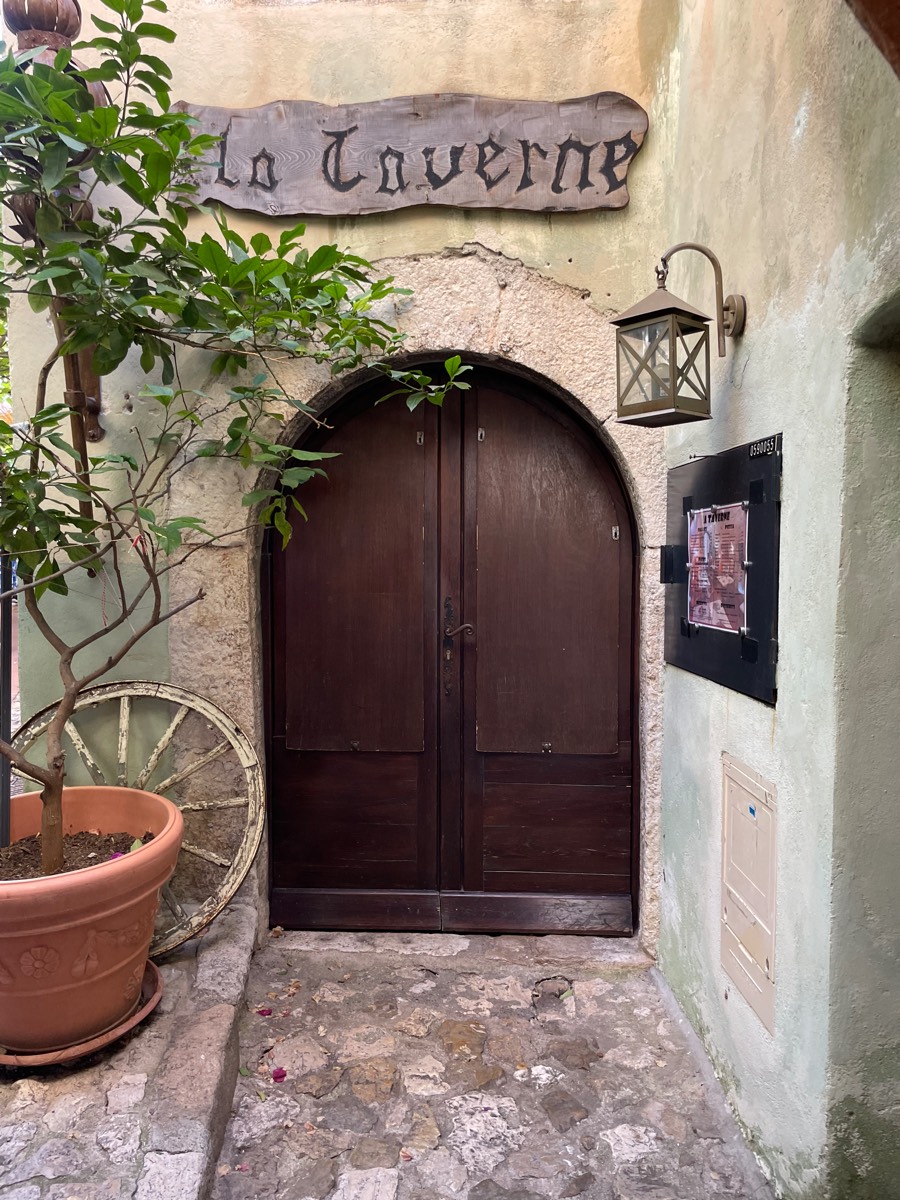




The back of the building faces the open water
Did You Know? - The Oceanographic Museum was inaugurated in 1910 by Monaco's modernist reformer Prince Albert I, who invited to the celebrations not just high officials and celebrities but also the world-leading oceanographers of the day to develop the concept of a future Mediterranean Commission dedicated to oceanography, now called Mediterranean Science Commission.
Jacques-Yves Cousteau was director from 1957 to 1988. The Museum celebrated its centenary in March 2010, after extensive renovations.


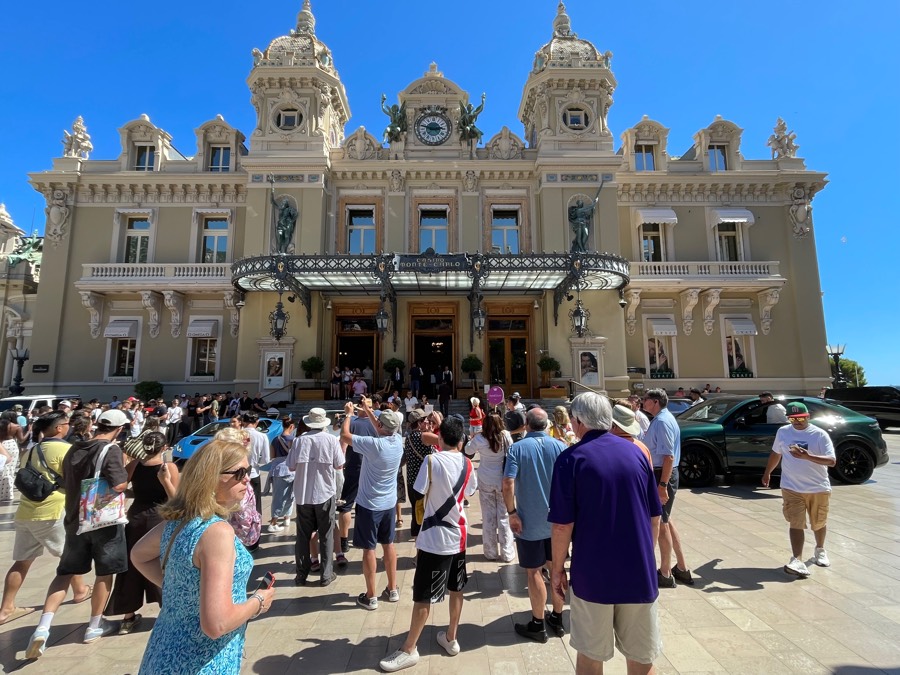
The Monte Carlo Casino, officially named Casino de Monte-Carlo, is a gambling and entertainment complex located in Monaco. It includes a casino, the Opéra de Monte-Carlo, and the office of Les Ballets de Monte-Carlo.


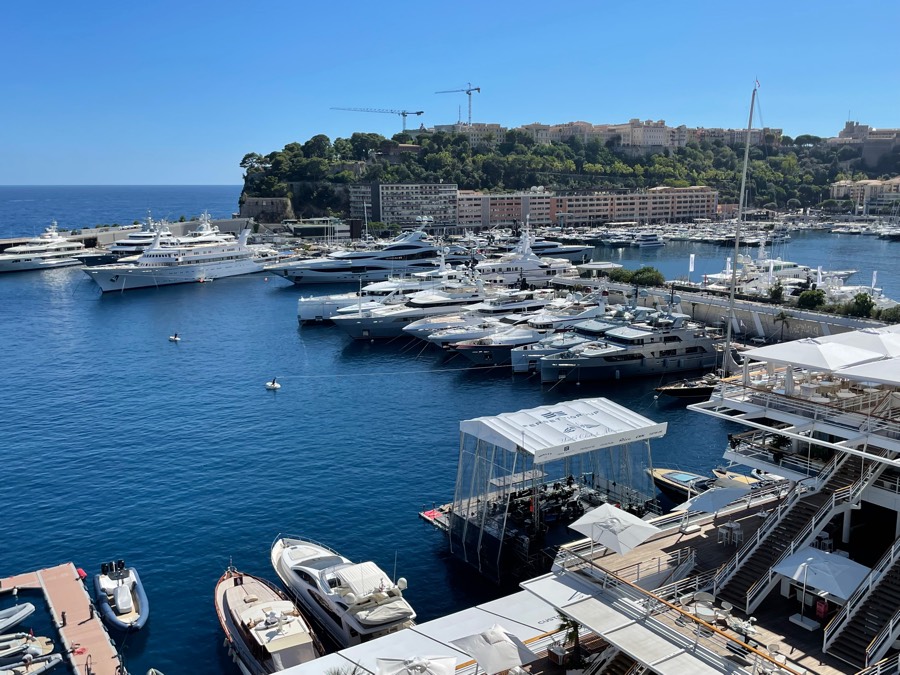
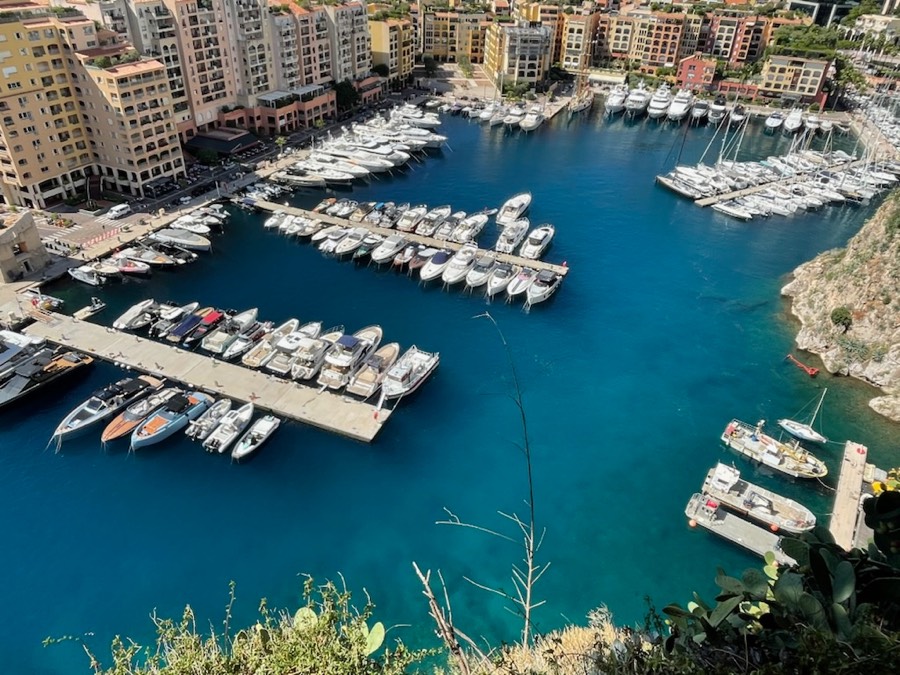



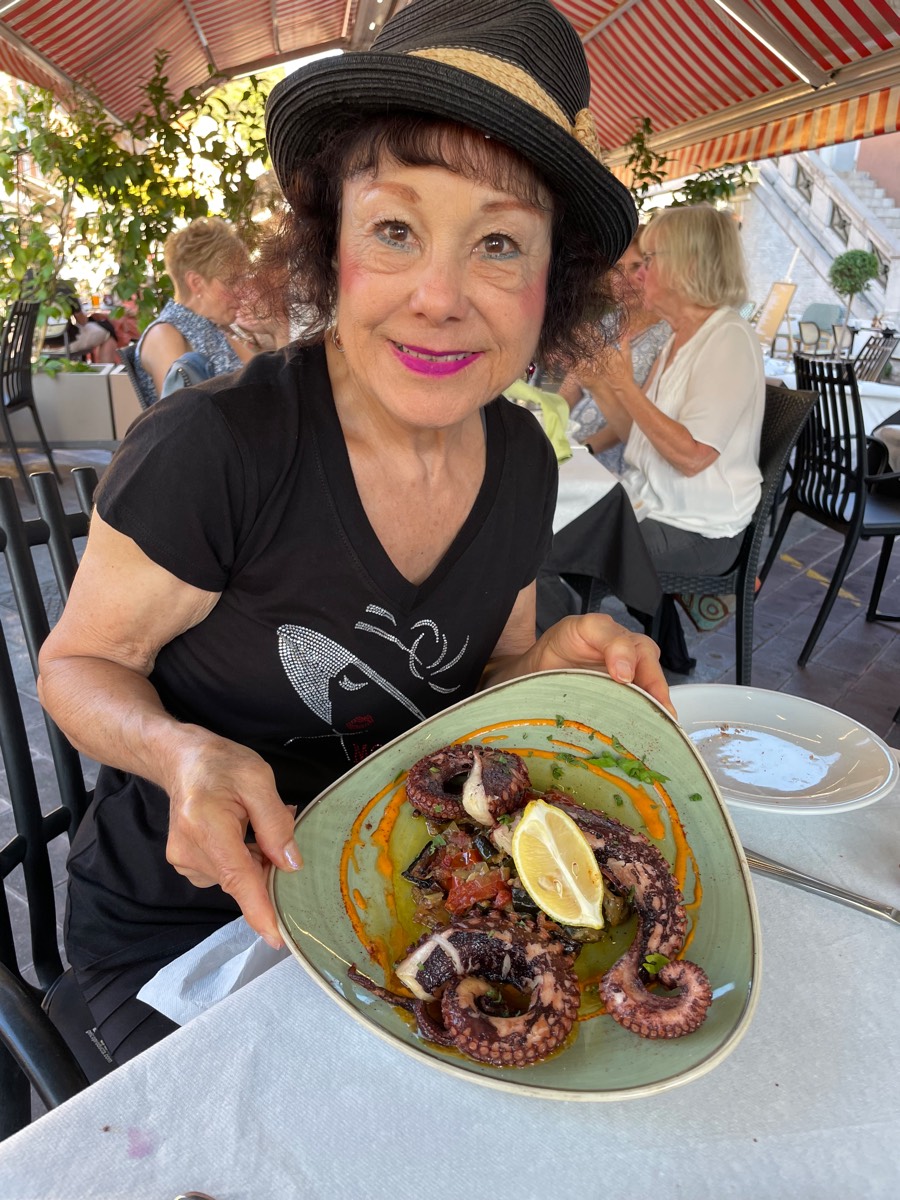
Octopus, their speciality
August 31st Sunday Eze, Monaco & Monte Carlo - Go To Top Of Page - Next Day

This morning we head out of Nice to Milan by train 🚂 We it was a travel day. Started in Nice on the 9:20 🚂 French train to Ventimiglia in Italy then got the Italian train 🚂 to Milan. The Hotel is only 8 minutes away from the station. Got to the hotel about 4:00 and walked for dinner.
Did You Know? - Milan is the fashion and financial capital of Italy, famous for Leonardo da Vinci's Last Supper and the Duomo cathedral, which took nearly 600 years to complete.
The city was founded by Celts around 600 B.C., named Mediolanum by the Romans, and was once the capital of the Western Roman Empire. Milan is also the birthplace of the iconic Christmas cake, panettone, and the aperitivo ritual, and it boasts a network of canals designed by Leonardo da Vinci.
Art & History
The Last Supper: Leonardo da Vinci's famous fresco is located in the Church of Santa Maria delle Grazie.
Duomo di Milano: The magnificent Gothic cathedral took nearly 600 years to complete, with the first stone laid in 1386 and finishing in the 19th century.
Birth of the City: Milan was founded by Celtic tribes around 600 B.C. and was later conquered by the Romans, who named it Mediolanum, meaning "in the middle of the plain".
Roman Capital: Milan served as the capital of the Western Roman Empire in late antiquity.
Culture & Lifestyle
Fashion Capital: Milan is a global fashion capital, home to major fashion houses and host to prestigious events like Milan Fashion Week. Birthplace of Aperitivo: The popular Italian pre-dinner drink and snack tradition, known as aperitivo, originated in Milan.




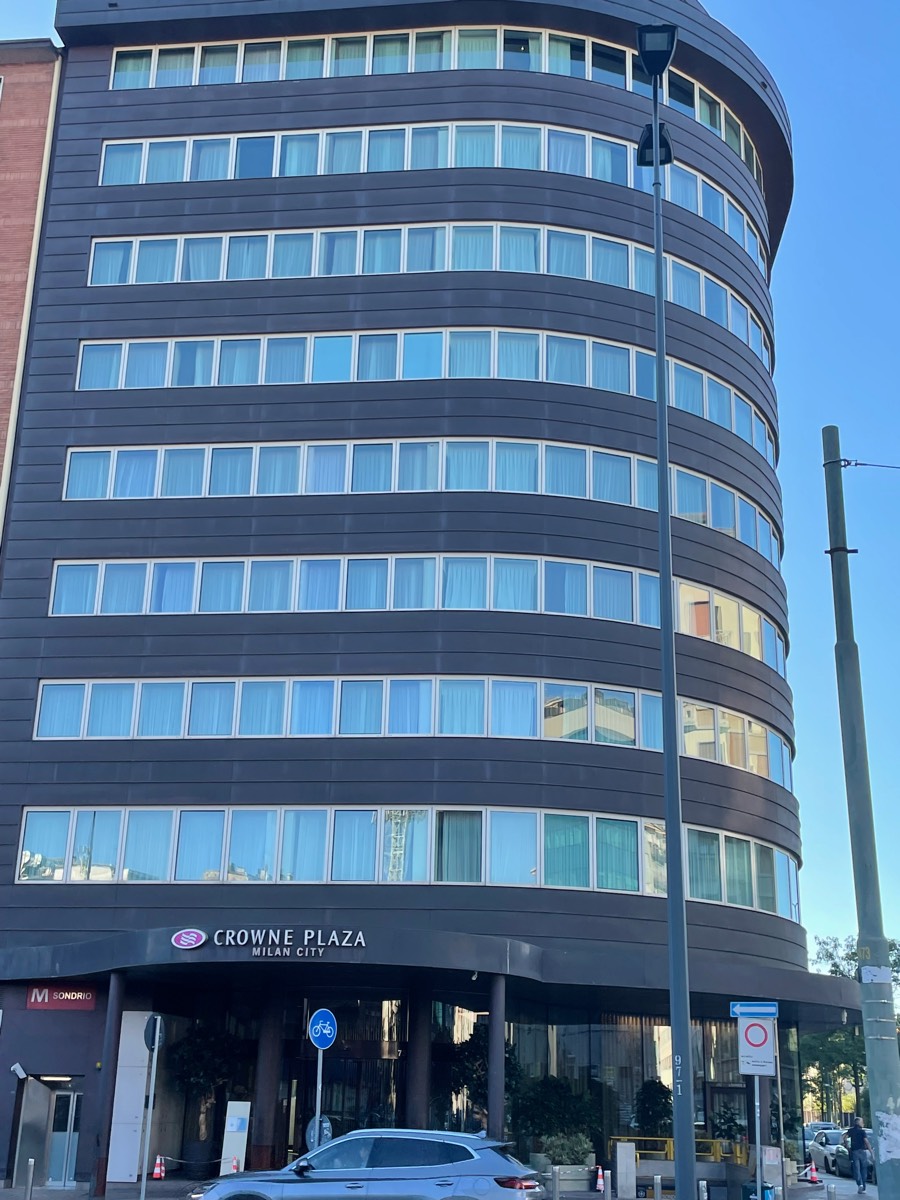

On Sunday. When we got back to the hotel D realized that she had her cell phone taken. Canceled it through Spectrum. Not sure what else I can do.
September 1st Monday - Go To Top Of Page - Next Day

Milan is the fashion and financial capital of Italy, famous for Leonardo da Vinci's Last Supper and the Duomo cathedral, which took nearly 600 years to complete. The city was founded by Celts around 600 B.C., named Mediolanum by the Romans, and was once the capital of the Western Roman Empire.
Milan is also the birthplace of the iconic Christmas cake, panettone, and the aperitivo ritual, and it boasts a network of canals designed by Leonardo da Vinci.

I lost it!!
Ok, so we started off taking a On Off bus for the day to get a grasp of the area. First stop was the Apple Store. After talking to them we decided to wait until we got back to buy. We had lunch in the old town.


The Domo Cathedral
Did You Know? - Milan's Duomo is the world's second-largest Catholic cathedral, a six-century project known for its distinct pink Candoglia marble, thousands of statues and gargoyles, and the gilded Madonnina statue on its highest spire. The cathedral features unique historical elements like a relic of one of the nails from Jesus' crucifixion, a famous sundial, and is connected to the origin story of the bright yellow risotto alla milanese dish.
Construction & Design
Six Centuries of Construction: The Duomo's construction began in 1386 and took 579 years to complete, with workers from all over Europe contributing to its diverse design elements.
Candoglia Marble: The entire cathedral is covered in distinct pinkish Candoglia marble, a gift from the first Duke of Milan, transported via canals and lakes from a quarry more than 60 miles away.
International Gothic Style: While designed in a local variation of Gothic style, the diverse backgrounds of its builders resulted in numerous distinct motifs and styles found throughout the cathedral.
Key Features
The Madonnina: A gilded bronze statue of the Virgin Mary, the Madonnina, sits atop the highest spire and protects the city, with local laws historically prohibiting buildings taller than it.
Saint Bartholomew Flayed: The cathedral houses a famous sculpture of St. Bartholomew, an apostle who was skinned alive, with his skin draped around him like a cloak.
Nail of the True Cross: The Duomo is believed to hold one of the nails from Jesus' crucifixion, a relic displayed annually in a ritual called the "Nivola".
Massive Organ: The Duomo houses Italy's largest organ, an instrument with thousands of pipes that fills the vast space with sound. (Bob, they were NOT talking about me!)
Legends & Traditions
Risotto alla Milanese Legend: A story connects the origin of the saffron-dyed risotto alla milanese to a glassmaker working on the Duomo, whose assistant added saffron to a wedding banquet risotto as a joke.
The Duomo Sundial: A sundial, built in 1780, uses an oculus to let in sunlight, which historically set the time for the city and was the astronomical reference for the Prime Meridian before Greenwich took over.

Monument to Vittorio Emanuele II & reflection of Milan Cathedral.

Did You Know? - Jamaica, since 1911. An exotic name for a highly utopian place nestled in the very heart of Brera. A community that, despite being located right in the center of the quite pragmatic Milano, made the unconventional choice to live through art and dreams, passion and ideals.
Its proximity to Brera Art Academy in addition to the post-war cultural renaissance had both an influence on its totally unplanned evolution, from being just a neighborhood tavern mostly frequented by craftsmen and seamstresses to becoming a bohemian bistro animated by artists, intellectuals, and flâneurs.
Truth is that still today gathering within this place's walls may generate a very unique energy.

Galleria Vittorio Emanuele II
Did You Know? - Galleria Vittorio Emanuele II , Milan, Italy. The triumphal arch entrance. It is a major landmark of Milan. Galleria Vittorio Emanuele II is a four-story double arcade in the centre of town. The Galleria is named after Victor Emmanuel II, the first king of the Kingdom of Italy. It was designed in 1861. Architect Giuseppe Mengoni built it between 1865 and 1877. The Gallery is Italy s oldest active shopping gallery.




Bob performs tonight
Did You Know? - "La Scala," or Teatro alla Scala, is a world-renowned opera house located in Milan, Italy. While the image provided depicts the iconic Milan Cathedral (Duomo di Milano), La Scala is another significant landmark in Milan, situated relatively close to the Duomo in the city center.
About La Scala:
Historic Significance: Inaugurated in 1778, La Scala replaced the Royal Ducal Theatre after a fire and became a prominent center for Italian opera, hosting premieres of works by composers like Verdi, Bellini, and Puccini.
Location and Name Origin: The theater is built on the site of the former church of Santa Maria alla Scala, from which it derives its name.
Cultural Hub: Beyond its historical importance, La Scala remains a leading institution for opera and concerts globally, known for its exceptional acoustics and critical audiences.
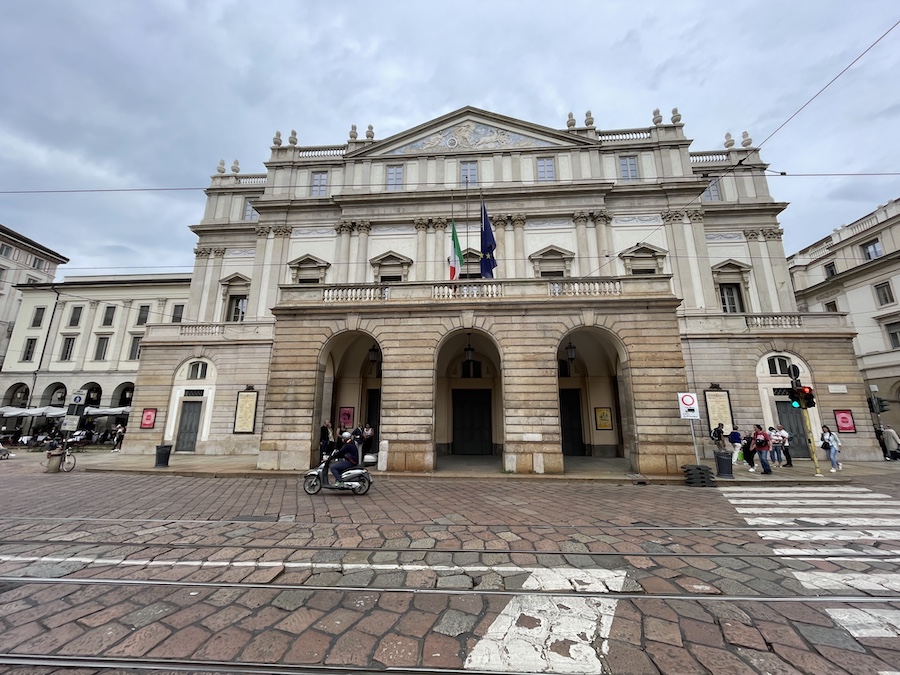
Facade of La Scala opera house in Milan, Italy. It is known as one of the most important theatres in the world
September 2nd Tuesday - Go To Top Of Page - Next Day

Did You Know? - Verona is the second-largest city in the region of Veneto in Italy, with 255,131 inhabitants. It is one of the seven provincial capitals of the region, and is the largest city municipality in the region and in northeastern Italy.
The metropolitan area of Verona covers an area of 1,426 km2 (550.58 sq mi) and has a population of 714,310 inhabitants.
It is one of the main tourist destinations in Northern Italy because of its artistic heritage and several annual fairs and shows as well as the opera season in the Arena, an ancient Roman amphitheater.
The opera season begins in May and continues throughout the summer each year. During these months, the city is filled with opera-loving tourists, technical artists, and opera employees, so booking hotels in advance is essential.
Between the 13th and 14th centuries, the city was ruled by the della Scala family. Under the rule of the family, in particular of Cangrande I della Scala, the city experienced great prosperity, becoming rich and powerful and being surrounded by new walls. The della Scala era is preserved in numerous monuments around Verona.
Two of William Shakespeare's plays are set in Verona: Romeo and Juliet (which also features Romeo's visit to Mantua) and The Two Gentlemen of Verona.
It is unknown if Shakespeare ever visited Verona or Italy, but his plays have lured many visitors to Verona and surrounding cities. Verona was also the birthplace of Isotta Nogarola, who is said to be the first major female humanist and one of the most important humanists of the Renaissance. In November 2000, the city was declared a World Heritage Site by UNESCO because of its urban structure and architecture.
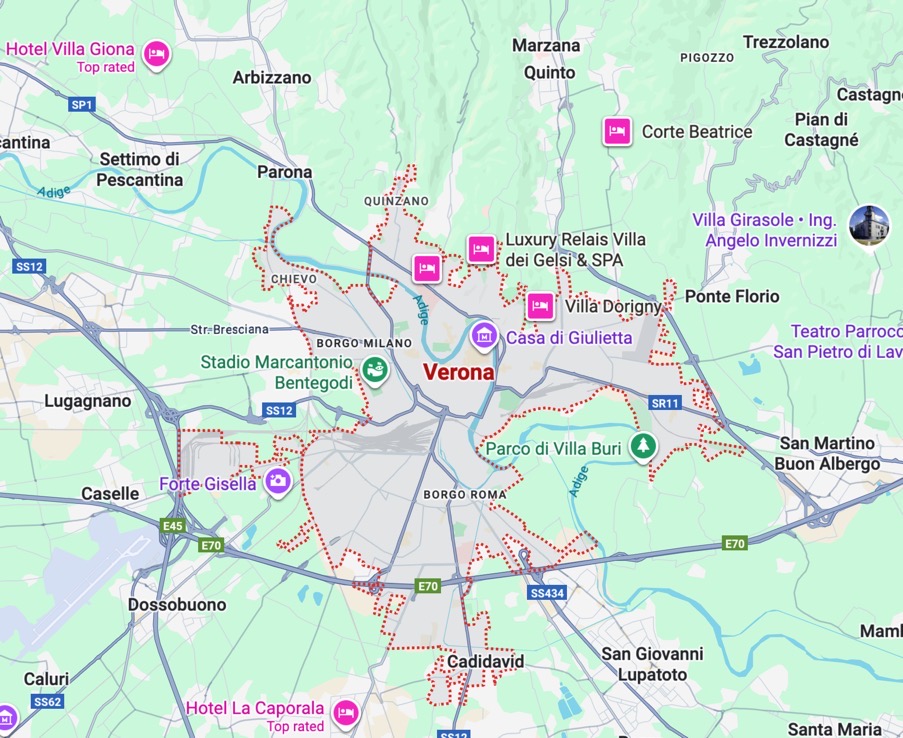
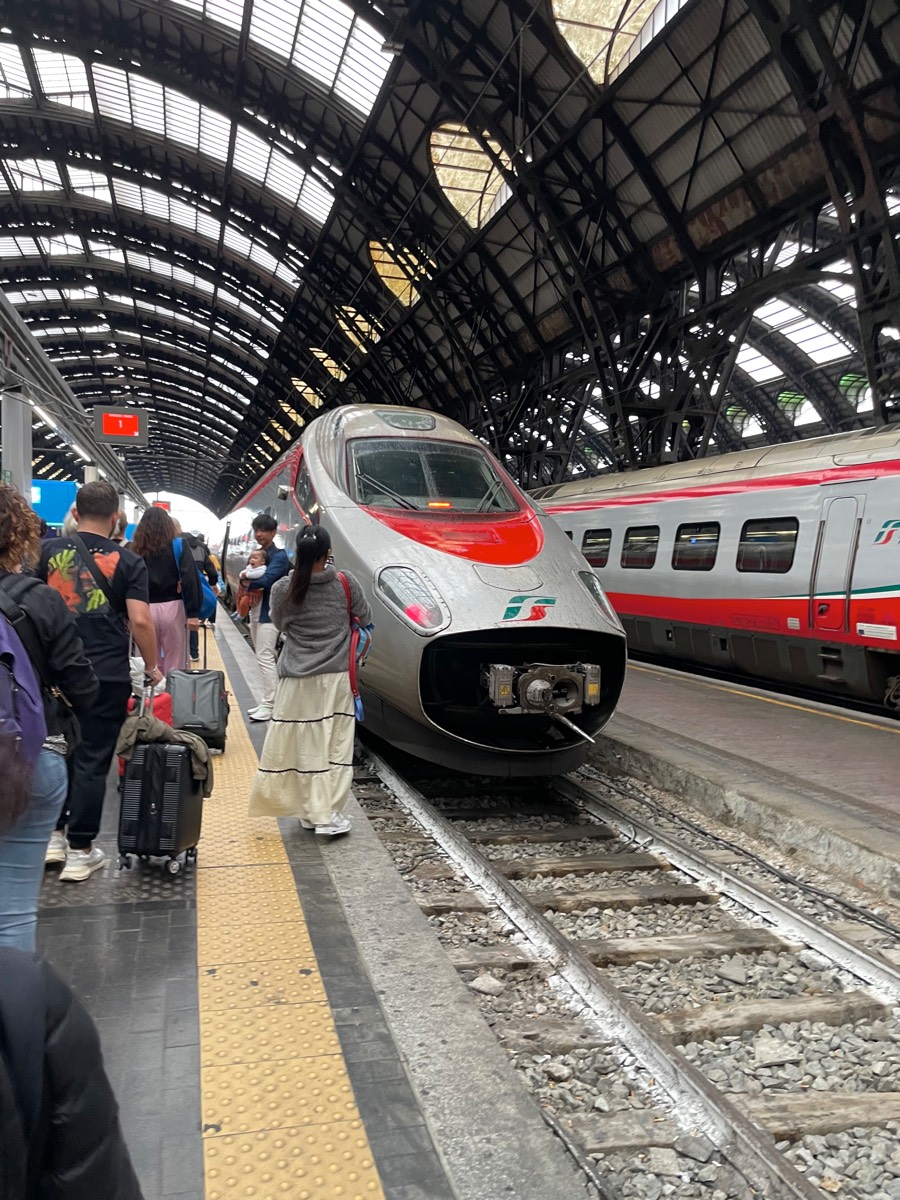

The town was a lot more than we expected. We got there about 11am and had a return trip back at 5:05 pm. Did a lot of fast walking. Couldn't see the coliseum because a concert was practicing for that night.



Palazzo Barbieri palace Palazzo della Gran Guardia Nuova Neoclassical style building of town hall in Piazza Bra square in historical city centre, Veneto Region
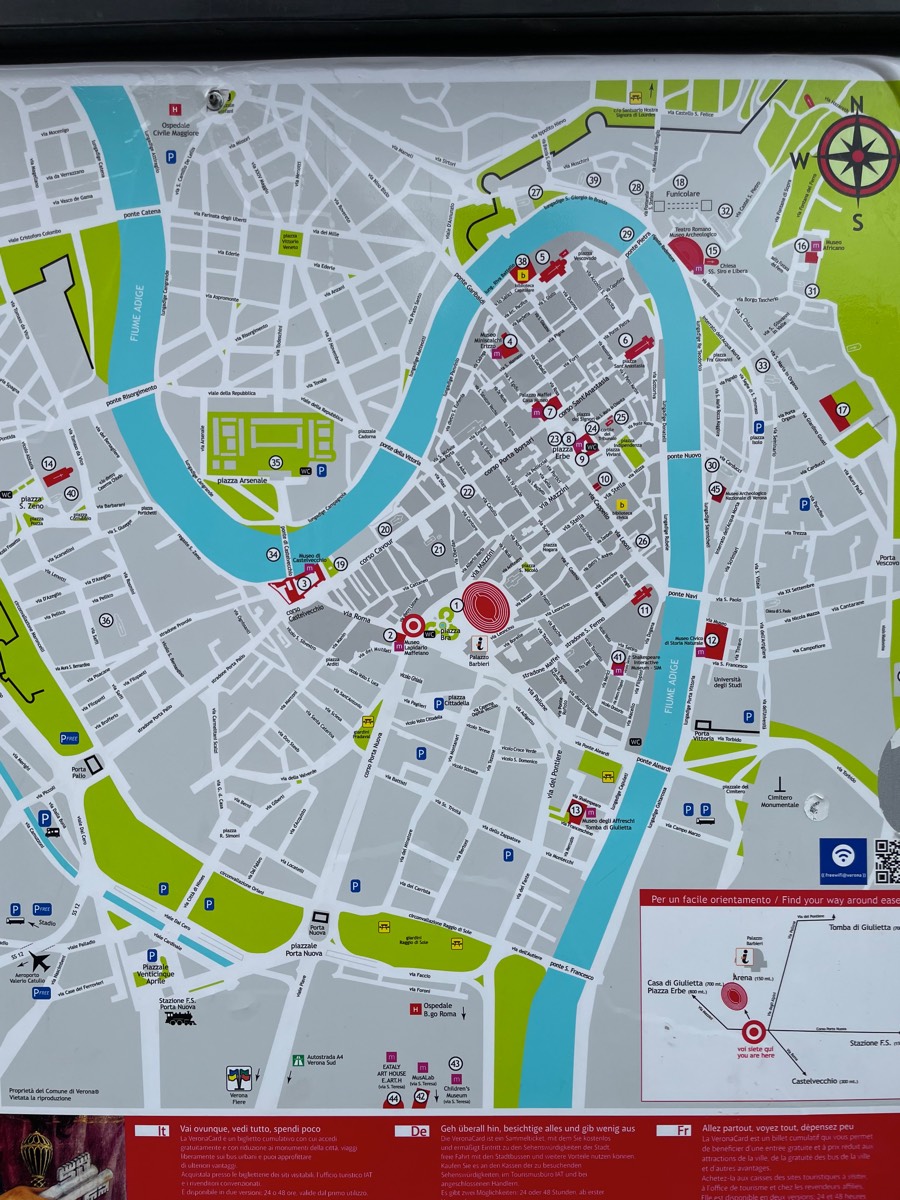

Verona, view from the Ponte Pietra to Castel San Pietro
Did You Know? - Colle San Pietro (Saint Peter's Hill) is a hill, which rises a few hundred meters above the Roman Theatre. It is a place of great touristic interest. It's possible to reach it on foot thanks to the suggestive stairway that leaving from Ponte Pietra bordering the Roman Theatre, swiftly leads to its top.
You can also easily reach Castel S. Pietro using the funicular, so enjoying the view of the city. Then you can come back through a pleasant walk alongside the Roman Theatre, reaching Ponte Pietra.
During the Roman age the hill was called "Monte Gallo" (Rooster Mountain), and had a strong religious function because of its temple and theatre which is still preserved.
The name "Colle San Pietro" was given to the hill during the Medieval Period when a church dedicated to Saint Peter was erected on the remains of the ancient Roman temple.
Being a strategic place of the town, starting from the medieval period up to 1321, when Cangrande della Scala was lord of the town, was fortified as a battlements point as typical of that historical period.
Between the XIV and XV centuries, the hill, together with lots of other building works, the famous Castello Visconteo (the Castel of the Viscount) was erected, the reason being Gian Galeazzo Visconti, lord of the town, wanted the place to become a fortified stronghold controlling the whole town.
The fortified citadel gained further importance with the Serenissima, which maintained the castle and constructed more around it.







Basilica de Santa Anastasia, Verona
Did You Know? -The church is dedicated to the Virgin Anastasia, a martyr from the 4th century. The building is constructed in the Italian Gothic style. Construction was begun by the order of the Dominicans around 1290 AD, although it was not consecrated for almost 200 years. Construction was supported by the Della Scala family, who ruled Verona from the late 13th to the late 14th century.




Tombs anyone???



Also, we didn't have time to go in. Romeo and Juliet balcony. It is inside , we could barely see it
Got a 3 day pass on to use all the modes of transportation. Tomorrow we have an all day Como & Bellagio cruise tour.
September 3rd Wednesday - Go To Top Of Page - Next Day
Today we took one of our booked tours to Lake Como and Bellagio. On the way there we saw an apartment building with gardens. Lake Como is about an hour away from Milan.

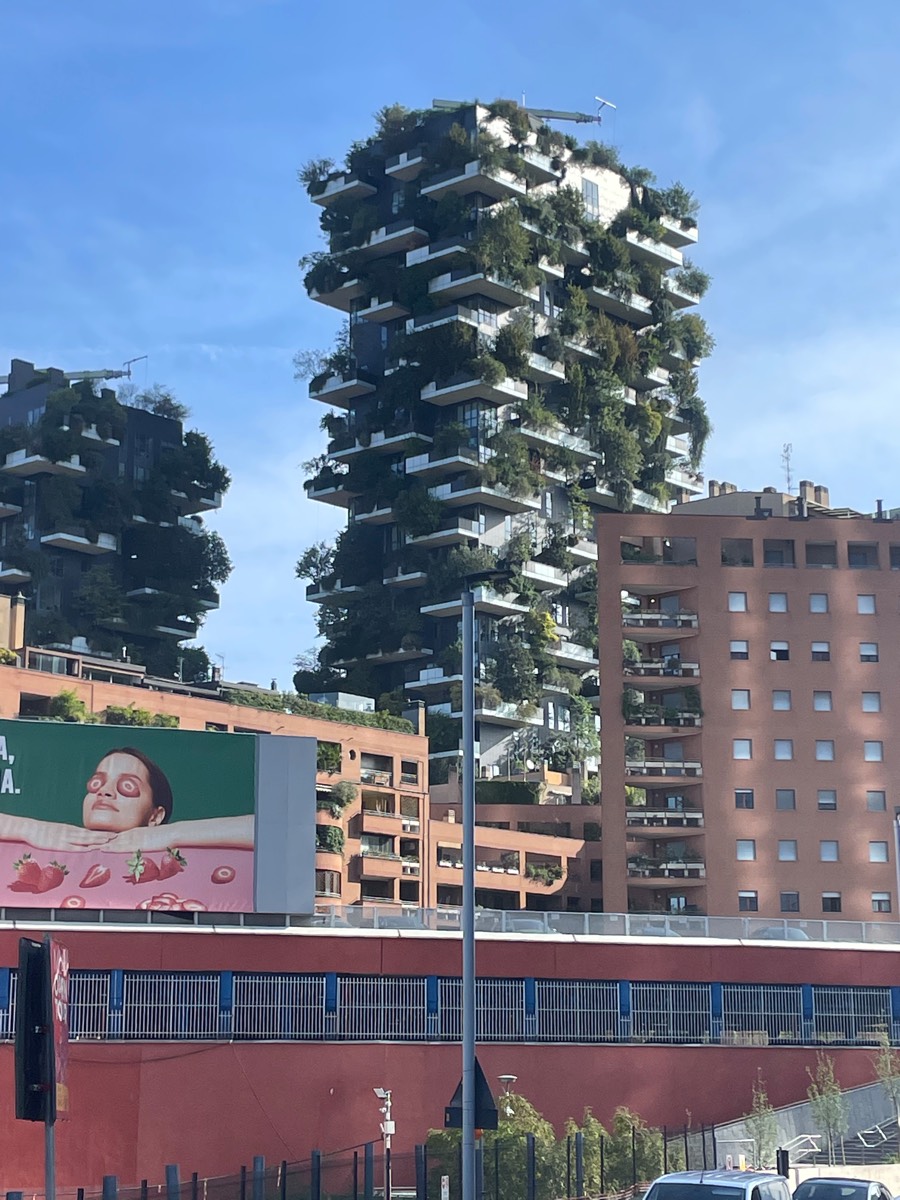
On our way to the cruise we saw the famous Vertical Wood, sustainable residential building model, consisting of two residential towers of 110 m and 76 m high, built in the center of Milan at the confines of the Isola district

Approximately 40 miles
Did You Know? - Como is a city at the southern tip of Lake Como in northern Italy. It's known for the Gothic Como Cathedral, a scenic funicular railway and a waterfront promenade. The Museo Didattico della Seta traces the history of Como's silk industry, while the Tempio Voltiano museum is dedicated to Italian physicist Alessandro Volta. Just north are the lakeside gardens of the palatial Villa Olmo, as well as other stately villas.

"Como Lake" is a famous upscale resort in Northern Italy, known for its dramatic scenery, villas, and towns like Bellagio and Varenna. It can also refer to Como Lake in St. Paul, Minnesota, a popular recreational spot in Como Regional Park with walking paths, birdwatching, and the Como Zoo nearby.
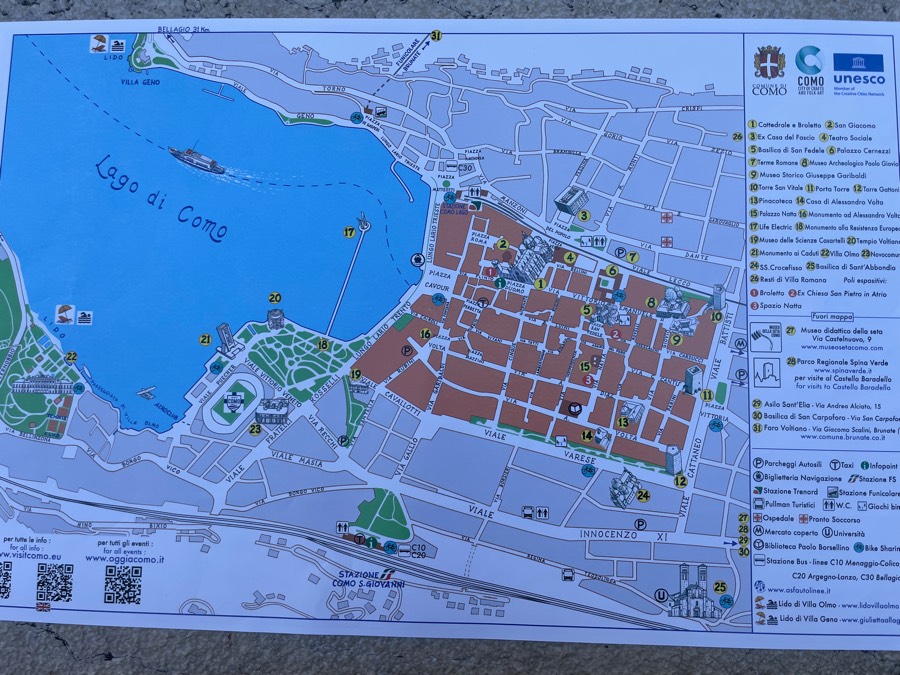

Como Cathedral
Did You Know? - The west facade at Como Cathedral was built from 1457 to 1498 (construction of the cathedral as a whole lasted from 1396 to 1770).
Gothic design elements are blended with Italian Renaissance motifs. Similarly, a few classical figures are mixed in amongst the Biblical iconography — the two spandrels above the portal arch (slides 1 & 7) contain busts of Roman writers Pliny the Elder & Younger, both of whom hailed from Como.




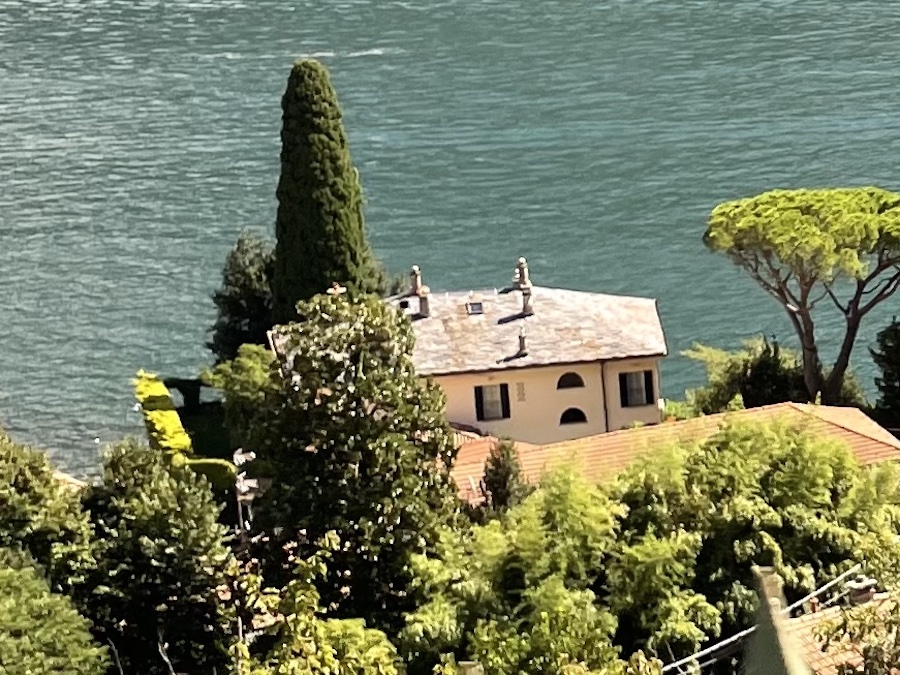

Did You Know? - Bellagio is a village on a promontory jutting out into Lake Como, in Italy. It's known for its cobbled lanes, elegant buildings and Villa Serbelloni Park, an 18th-century terraced garden with lake views. Nearby are the Tower of the Arts, a venue for exhibitions and performances, and the Romanesque San Giacomo Church. Close to rocky Loppia Beach, the Museum of Navigational Instruments displays sundials and compasses

18 Miles
We then took a boat ride 🚣 and saw a lot of fabulous villas before going to Bellagio.






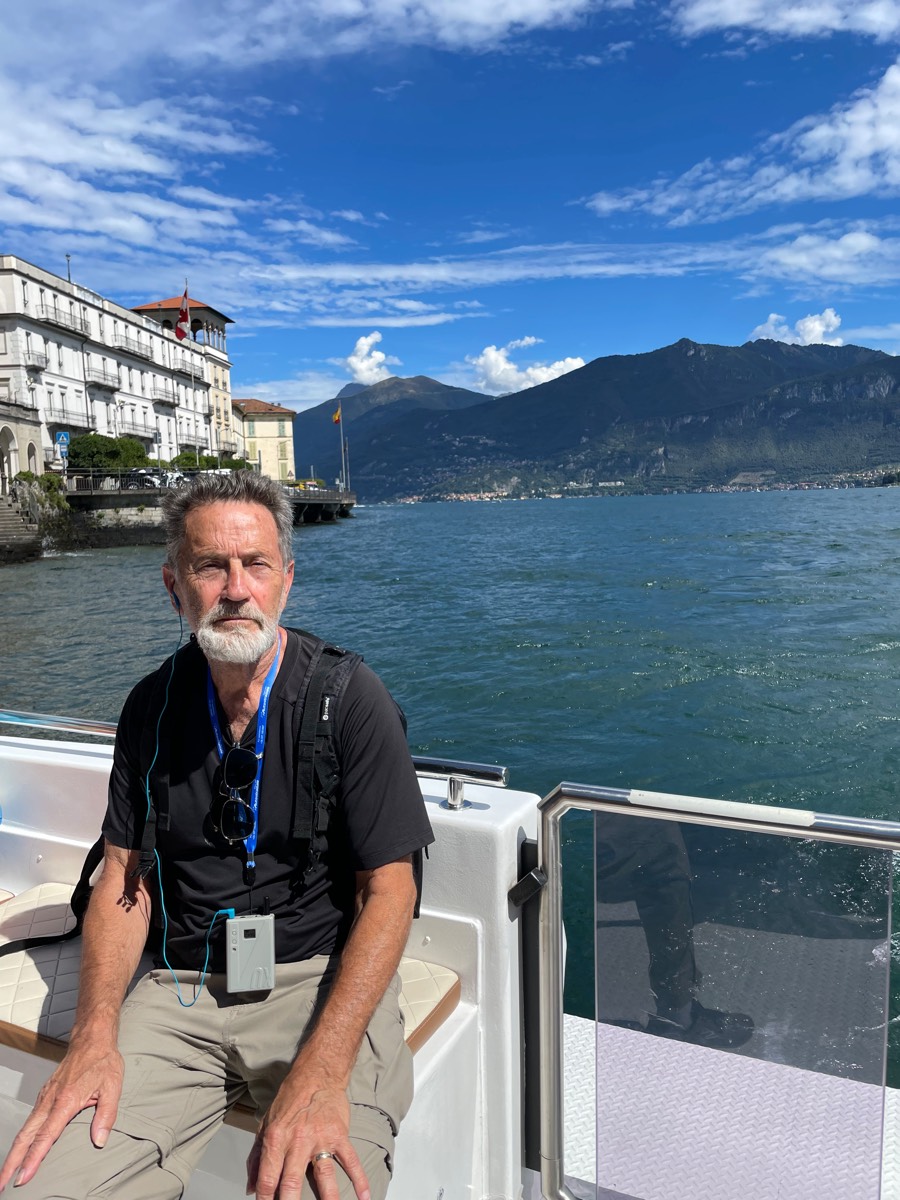


Villa Besana in Bellagio
Did You Know? - Villa Besana in Bellagio is an exceptional late 19th century lakeside property breathing character and prestige with manicured grounds, a heated swimming pool, a brand-new tennis court, two boathouses, a mooring, a beach and awe-inspiring views towards the beautiful Tremezzina with the famous Villa Carlotta and Villa del Balbianello.
Built in this idyllic location by the Marquis Eugenio Besana in 1891, and specifically positioned and designed to take full advantage of the glorious, sun-dappled panoramic views, Villa Besana was purchased in 1920 by Cav. Ing. Luigi Orlando who established the family as one of Italy's most important industrial dynasties. The villa remained in the hands of the Orlando family and was still used as a private residence until the end of 2020 when Property At Lake Como brokered the sale of the property to an important businessman.
All the last four generations occupying the villa during the last hundred years have been inspired by their passion for culture, luxury and style; a dedication culminating not only in the establishment of a garden which in autumn transforms into an artist's palette of intense colour and also in the 19th and 20th-century Italian interior including impressive staircases, marble fireplaces, marble and wooden parquet flooring, lofty walnut coffered ceilings, dark oak boiserie panelling, typical of the early 20th century romantic style. More recently, the villa has undergone an impressive refurbishment, which has succeeded in combining the grandeur of its glorious 20th century Art Nouveau style with the high-level luxury and services one expects today.
The villa boasts an impressive entrance hall, two magnificent sitting rooms, a game room, two tv rooms, a grand formal dining room seating 22, a library with oak panelling, 10 suites, two kitchens and a wine cellar as well as a winter garden and several outdoor dining and entertaining areas.
The villa is surrounded by an exclusive garden of almost 4 hectares with amazing colors and scents. Its position on Lake Como offers a panoramic shoreline walk of more than 300 meters.
To the property also belong several buildings accommodating staff and guests, including a charming little chapel.
Villa Besana is located directly on Lake Como, a few minutes away from Villa Melzi d'Eril and the picturesque town of Bellagio, also know as "The Pearl of the Lake". Renowned the world over, Bellagio is home to many famous visitors enjoying the splendour of the Lake for centuries. The estate is only 10 minutes' walk from the centre of Bellagio with its exclusive Hotel Villa Serbelloni, excellent restaurants and lakeside bars, fascinating shops and frequent ferry-boat services along the Lake from Como to Colico.
It is situated just 30 minutes from the renowned Menaggio Golf Club, 50 minutes' drive from Villa D'Este Golf Club and Como and within 1,5 hours' drive of Lugano Airport and Milan's Malpensa and Linate Airports. All these airports have facilities for private aircraft and helicopter transfers.
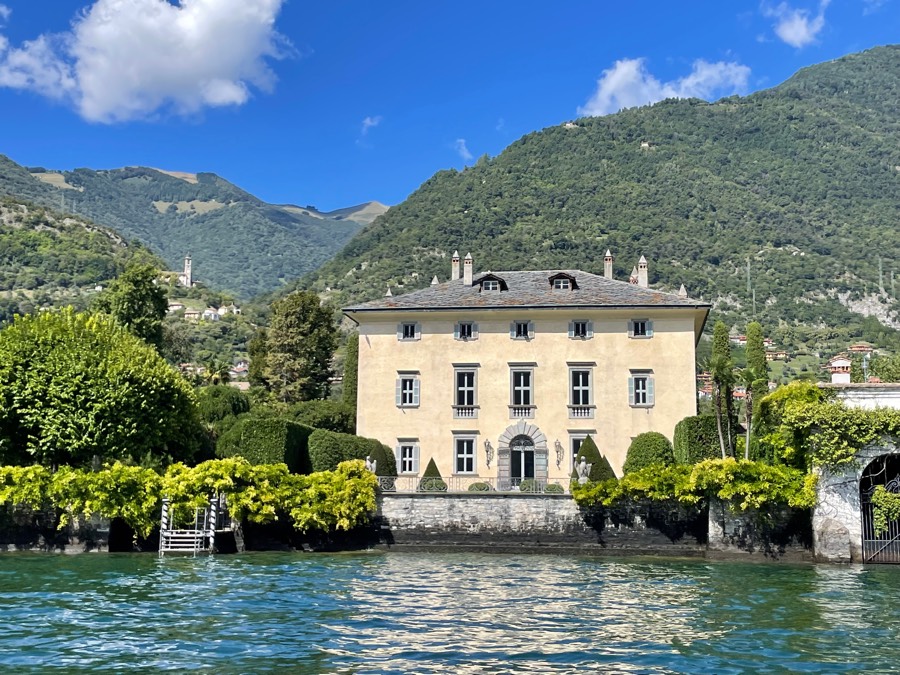


At Aperitivo Et Al you can taste a list of 40 wines by the glass , or explore the cellar which houses 1500 bottles , with the most representative Italian labels and which has received the Best Award of Excellence from Wine Spectator magazine for the third time.



September 4th Thursday - Go To Top Of Page - Next Day

We have only two sites booked. First the Cathedral Duomo. We booked everything we could get. Walking 🚶♂️ upstairs to the roof and self guided tour of the cathedral. Then the Museum. First group of pictures are the outside of the cathedral.
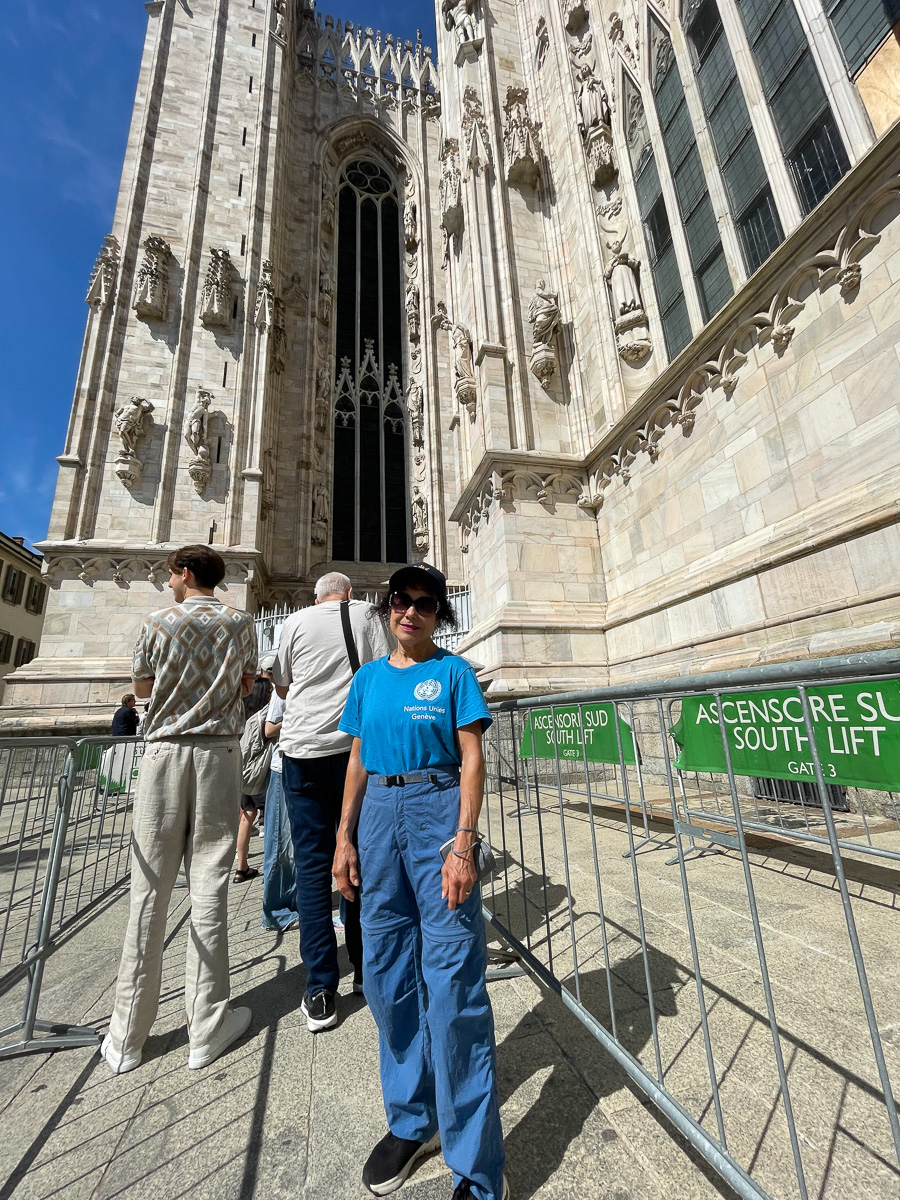



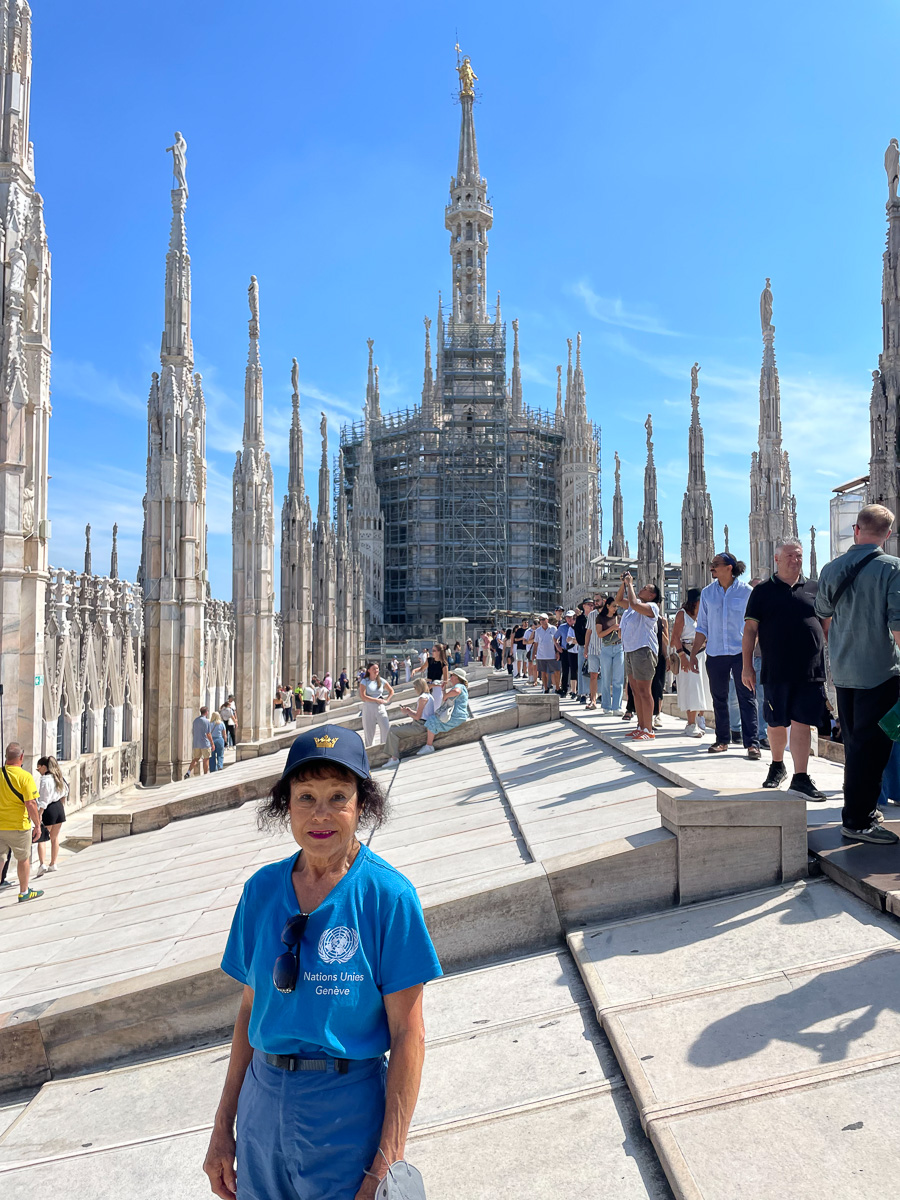
Wow, that is a site. Not a lot of people get to see. The view from the roof!
These are shots from after the war and now.

After the war!

Now



We then went inside.

Inside the gothic cathedral, you will find large stone pillars and vaults, stained glass windows, sculptures, altars, a museum, an archeological site, and inlaid marble floors.


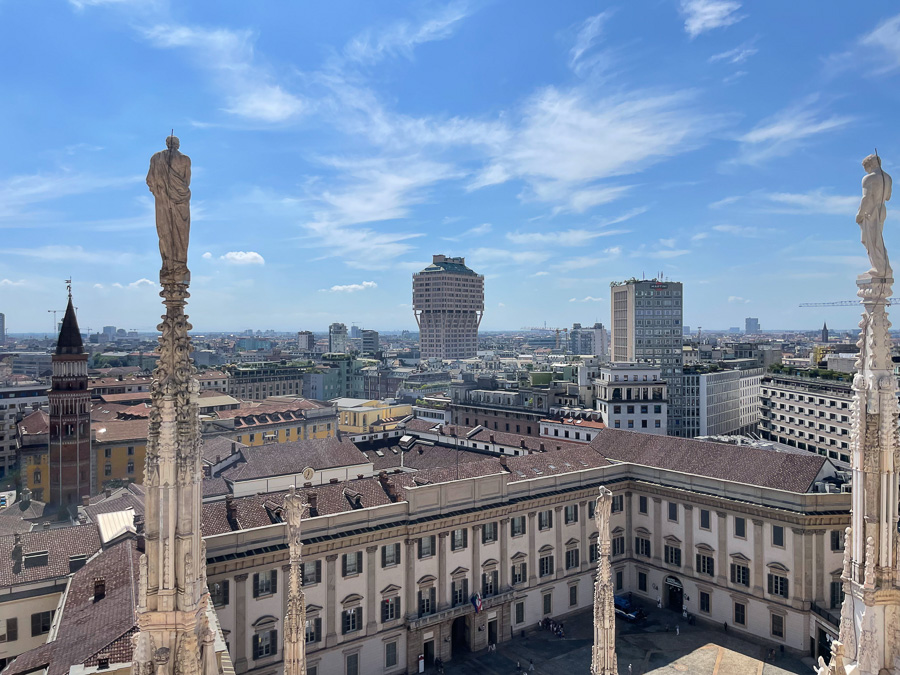




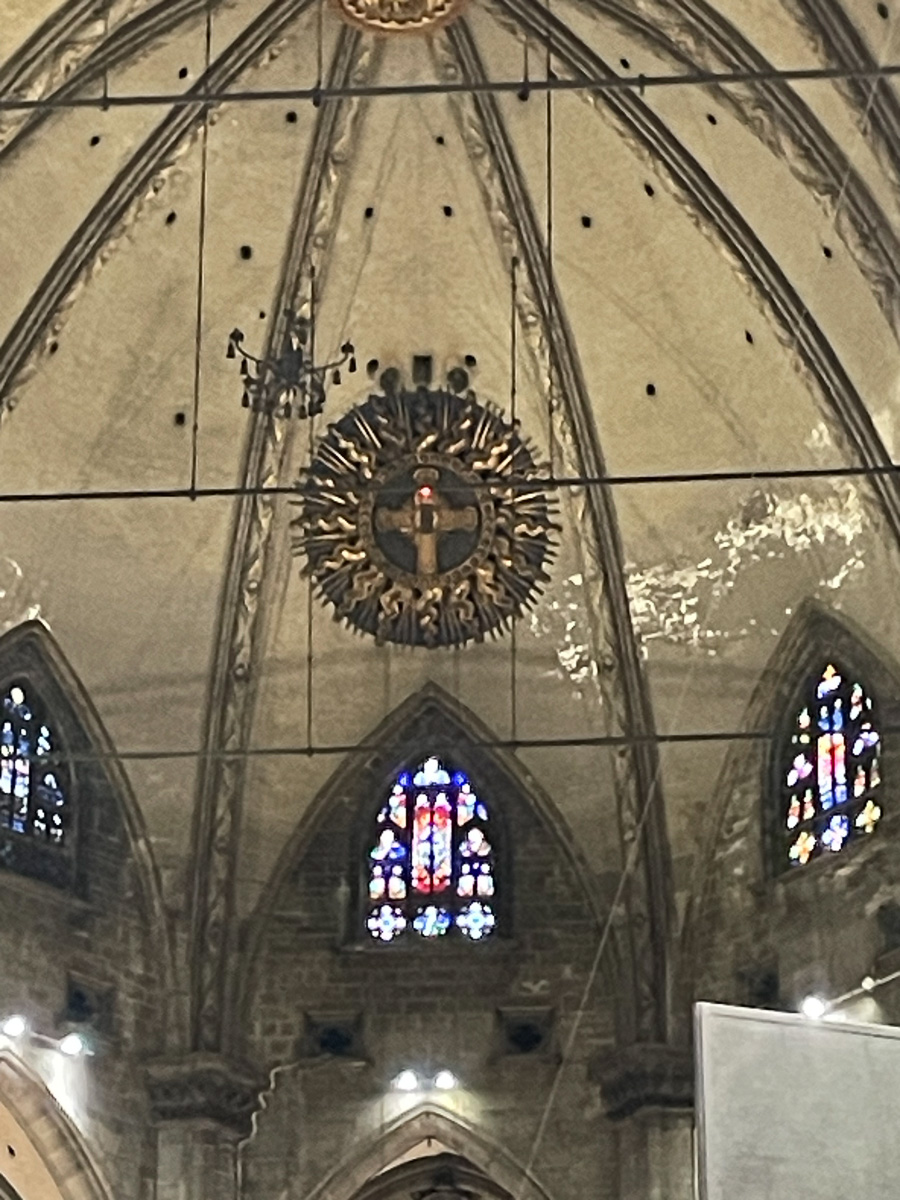
Then we hit the museum.
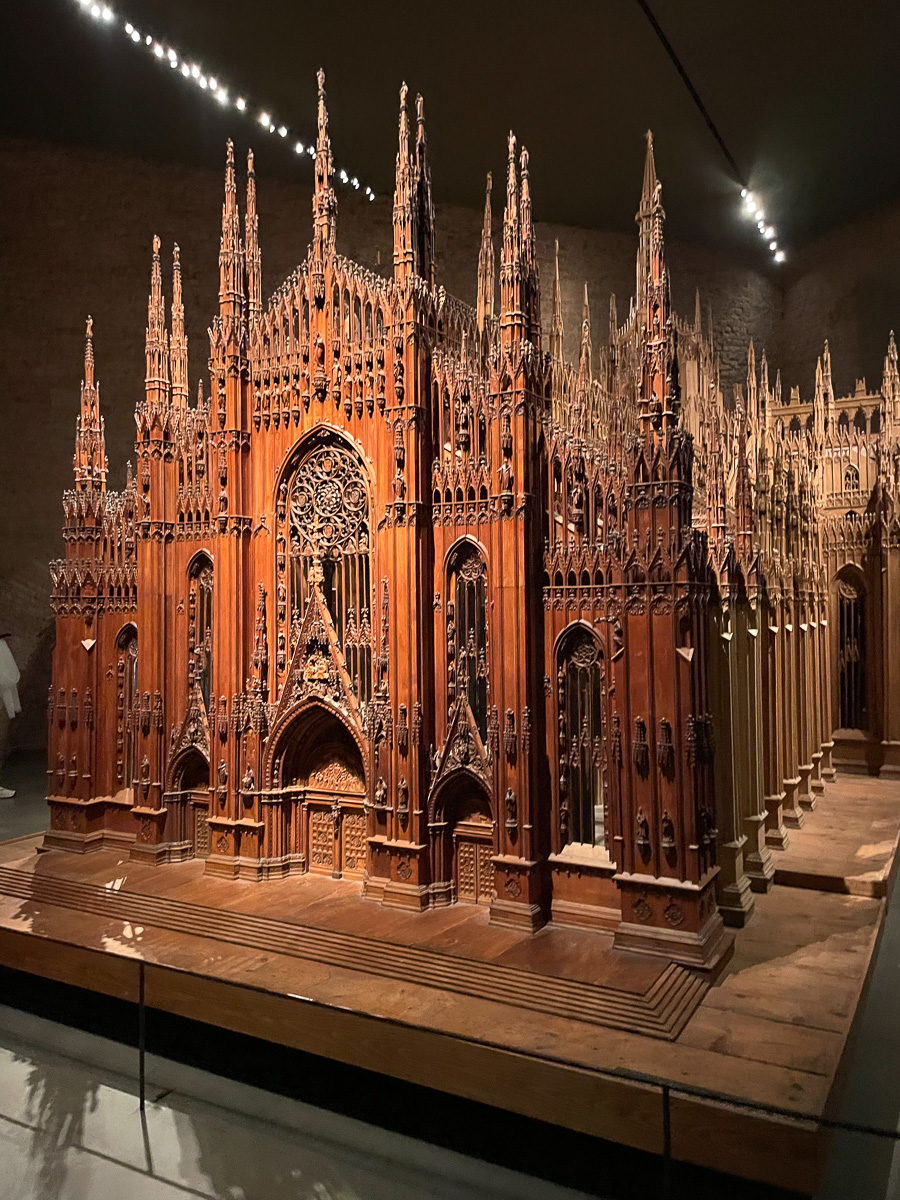
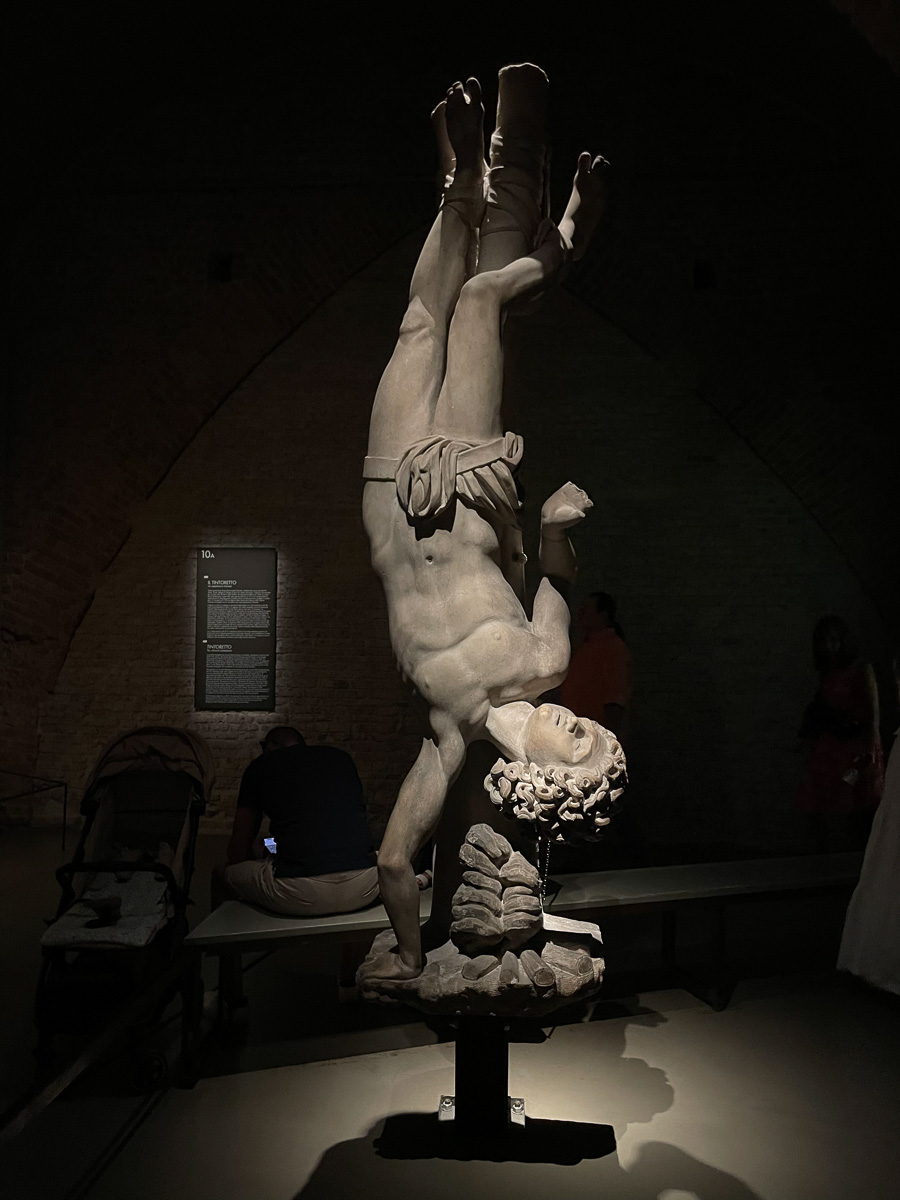
Statue of St Agapitus by Marco Antonio
Did You Know? - Agapitus (Italian: Agapito) is venerated as a martyr saint, who died on August 18, perhaps in 274, a date that the latest editions of the Roman Martyrology say is uncertain.
According to his legend, 16-year-old Agapitus, who may have been a member of the noble Anicia family of Palestrina, was condemned to death, under the prefect Antiochus and the Emperor Aurelian, for being a Christian.
After being captured and tortured during the persecution of Aurelian, he was taken to the local arena in Palestrina and thrown to the wild beasts. However, the animals refused to touch him and he was thus beheaded.

One of the most striking features of the Duomo is how richly decorated it is both inside and out. In fact, the cathedral boasts no less than 3,400 statues chronicling the who's who in Milanese religious, political and civic history.

The Madonnina
Did You Know? - The Madonnina is a statue of the Virgin Mary atop Milan Cathedral in Italy.
The Madonnina spire or guglia del tiburio ("lantern spire"), one of the main features of the cathedral, was erected in 1762 at the height of 108.5 m (356 ft), as designed by Francesco Croce. At the top of the spire is the polychrome Madonnina statue, designed and built by Giuseppe Perego in 1774, during the episcopacy of Giuseppe Pozzobonelli who supported the idea to place the Madonnina at the top of the Cathedral.
By tradition, no building in Milan is higher than the Madonnina. When Gio Ponti's Pirelli Building was being built in the late 1950s, at a height of 127.1 m (417 ft), a smaller replica of the Madonnina was placed atop the Pirelli building, so the new Madonnina remains the tallest point in Milan.
In 2010 another replica was placed as well on the top of the Palazzo Lombardia, at a height of 161 m (528 ft), being then the tallest building in the city. In 2015 still another replica was placed atop the Allianz Tower so that the Madonnina still occupies the highest roof in the city, now at 209 m (686 ft)


Bacchus

We needed a short rest!!
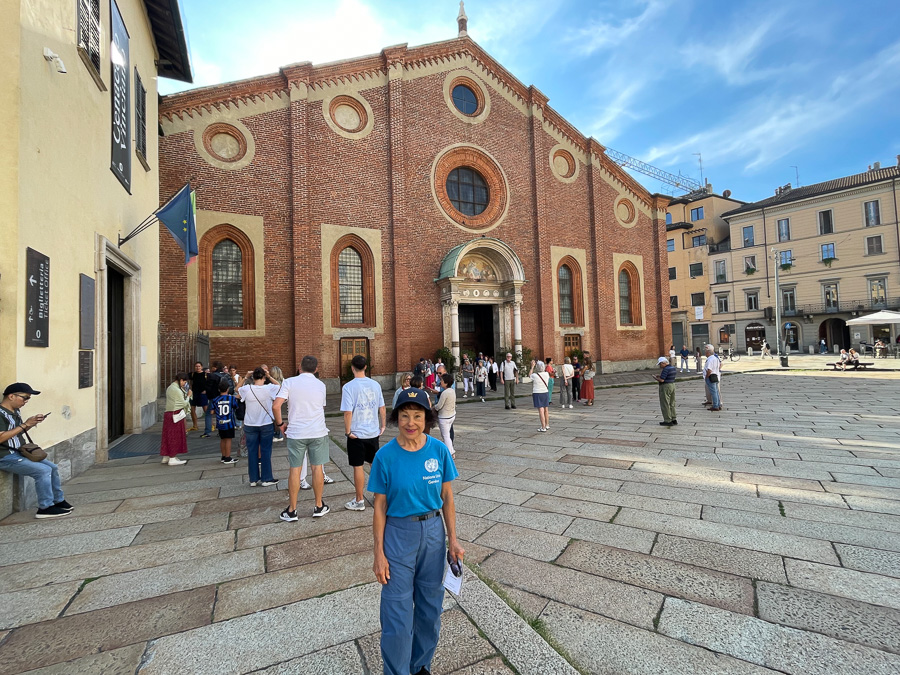

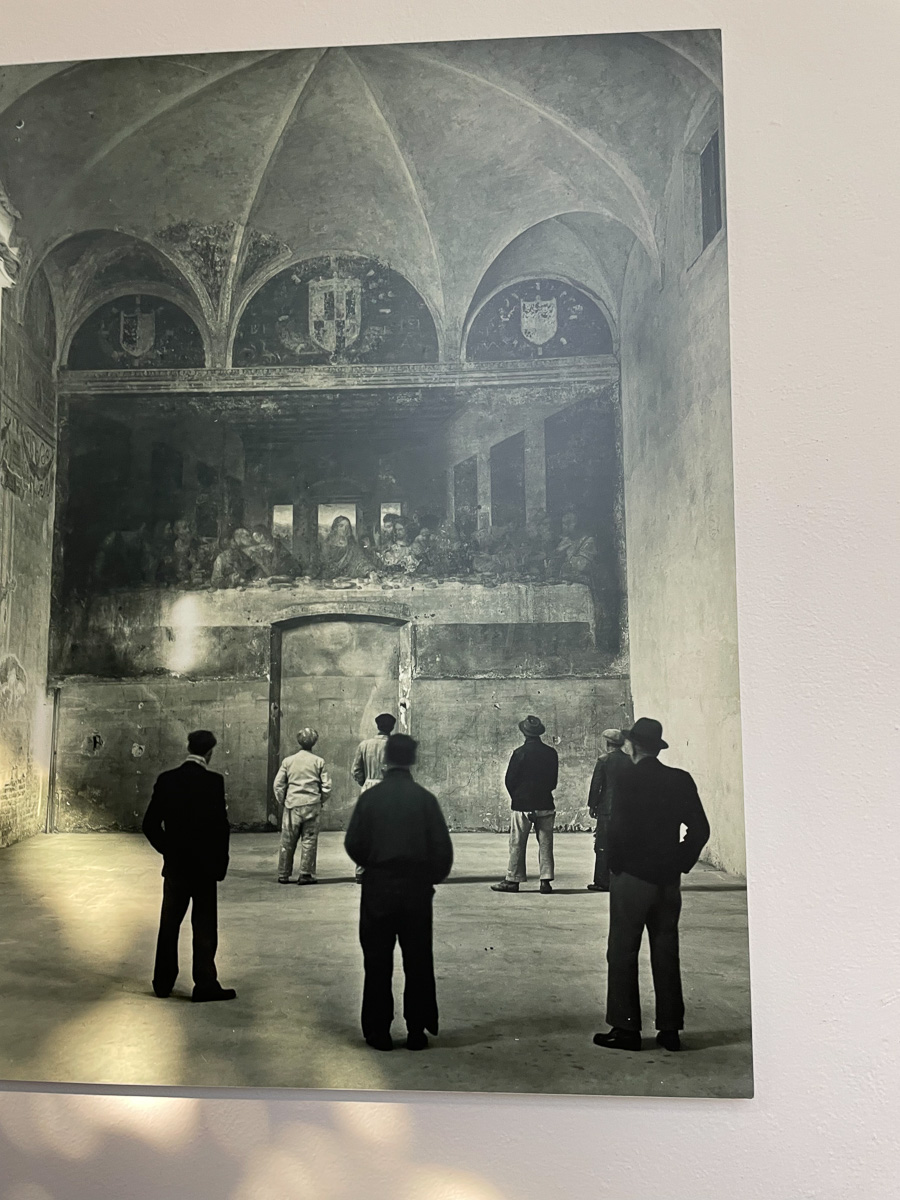
The Last Supper occupies the entire north wall of the refectory of the Dominican convent of Santa Maria delle Grazie, which was the place where the friars met to eat, pray, and meditate during their meals.


Leonardo's Last Supper is located in its original place, on the wall of the dining room of the former Dominican convent of Santa Maria delle Grazie, exactly in the refectory of the convent and is one of the most celebrated and well known artworks in the world.


Seating arrangements!

